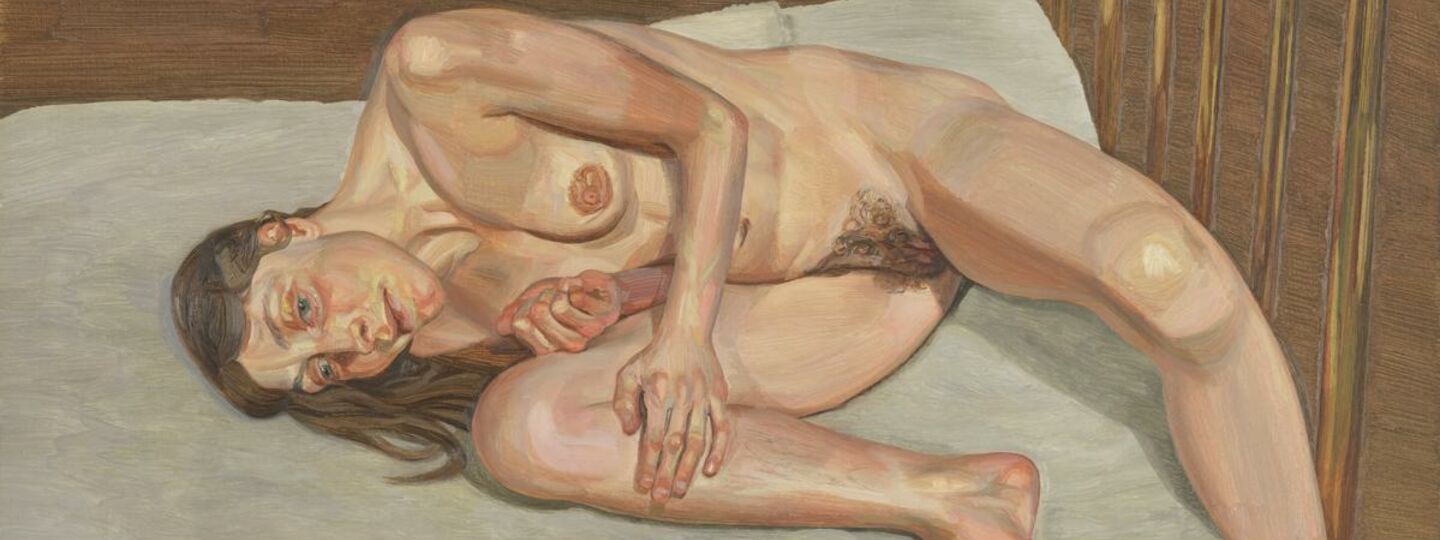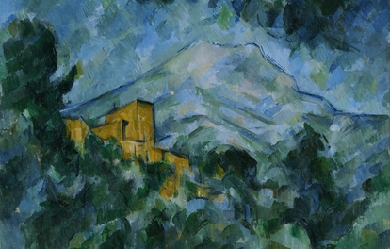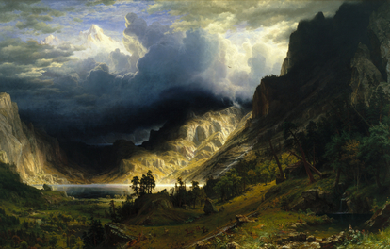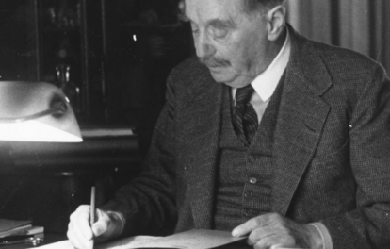
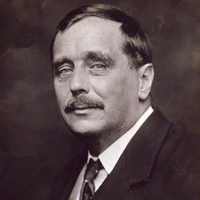
Herbert George Wells (21 September 1866 – 13 August 1946) was an English writer. He was prolific in many genres, writing dozens of novels, short stories, and works of social commentary, history, satire, biography, and autobiography, and even including two books on recreational war games. He is now best remembered for his science fiction novels and is often called the “father of science fiction”, along with Jules Verne and Hugo Gernsback.During his own lifetime, however, he was most prominent as a forward-looking, even prophetic social critic who devoted his literary talents to the development of a progressive vision on a global scale. A futurist, he wrote a number of utopian works and foresaw the advent of aircraft, tanks, space travel, nuclear weapons, satellite television and something resembling the World Wide Web. His science fiction imagined time travel, alien invasion, invisibility, and biological engineering. Brian Aldiss referred to Wells as the “Shakespeare of science fiction”. Wells rendered his works convincing by instilling commonplace detail alongside a single extraordinary assumption – dubbed “Wells’s law” – leading Joseph Conrad to hail him in 1898 as “O Realist of the Fantastic!”. His most notable science fiction works include The Time Machine (1895), The Island of Doctor Moreau (1896), The Invisible Man (1897), The War of the Worlds (1898) and the military science fiction The War in the Air (1907). Wells was nominated for the Nobel Prize in Literature four times.Wells’s earliest specialised training was in biology, and his thinking on ethical matters took place in a specifically and fundamentally Darwinian context. He was also from an early date an outspoken socialist, often (but not always, as at the beginning of the First World War) sympathising with pacifist views. His later works became increasingly political and didactic, and he wrote little science fiction, while he sometimes indicated on official documents that his profession was that of journalist. Novels such as Kipps and The History of Mr Polly, which describe lower-middle-class life, led to the suggestion that he was a worthy successor to Charles Dickens, but Wells described a range of social strata and even attempted, in Tono-Bungay (1909), a diagnosis of English society as a whole. Wells was a diabetic and co-founded the charity The Diabetic Association (known today as Diabetes UK) in 1934. Life Early life Herbert George Wells was born at Atlas House, 162 High Street in Bromley, Kent, on 21 September 1866. Called “Bertie” in the family, he was the fourth and last child of Joseph Wells (a former domestic gardener, and at the time a shopkeeper and professional cricketer) and his wife, Sarah Neal (a former domestic servant). An inheritance had allowed the family to acquire a shop in which they sold china and sporting goods, although it failed to prosper: the stock was old and worn out, and the location was poor. Joseph Wells managed to earn a meagre income, but little of it came from the shop and he received an unsteady amount of money from playing professional cricket for the Kent county team. Payment for skilled bowlers and batsmen came from voluntary donations afterwards, or from small payments from the clubs where matches were played. A defining incident of young Wells’s life was an accident in 1874 that left him bedridden with a broken leg. To pass the time he began to read books from the local library, brought to him by his father. He soon became devoted to the other worlds and lives to which books gave him access; they also stimulated his desire to write. Later that year he entered Thomas Morley’s Commercial Academy, a private school founded in 1849, following the bankruptcy of Morley’s earlier school. The teaching was erratic, the curriculum mostly focused, Wells later said, on producing copperplate handwriting and doing the sort of sums useful to tradesmen. Wells continued at Morley’s Academy until 1880. In 1877, his father, Joseph Wells, suffered a fractured thigh. The accident effectively put an end to Joseph’s career as a cricketer, and his subsequent earnings as a shopkeeper were not enough to compensate for the loss of the primary source of family income. No longer able to support themselves financially, the family instead sought to place their sons as apprentices in various occupations. From 1880 to 1883, Wells had an unhappy apprenticeship as a draper at the Southsea Drapery Emporium, Hyde’s. His experiences at Hyde’s, where he worked a thirteen-hour day and slept in a dormitory with other apprentices, later inspired his novels The Wheels of Chance, The History of Mr Polly, and Kipps, which portray the life of a draper’s apprentice as well as providing a critique of society’s distribution of wealth.Wells’s parents had a turbulent marriage, owing primarily to his mother’s being a Protestant and his father’s being a freethinker. When his mother returned to work as a lady’s maid (at Uppark, a country house in Sussex), one of the conditions of work was that she would not be permitted to have living space for her husband and children. Thereafter, she and Joseph lived separate lives, though they never divorced and remained faithful to each other. As a consequence, Herbert’s personal troubles increased as he subsequently failed as a draper and also, later, as a chemist’s assistant. However, Uppark had a magnificent library in which he immersed himself, reading many classic works, including Plato’s Republic, Thomas More’s Utopia, and the works of Daniel Defoe. This would be the beginning of Wells’s venture into literature. Teacher In October 1879, Wells’s mother arranged through a distant relative, Arthur Williams, for him to join the National School at Wookey in Somerset as a pupil–teacher, a senior pupil who acted as a teacher of younger children. In December that year, however, Williams was dismissed for irregularities in his qualifications and Wells was returned to Uppark. After a short apprenticeship at a chemist in nearby Midhurst and an even shorter stay as a boarder at Midhurst Grammar School, he signed his apprenticeship papers at Hyde’s. In 1883, Wells persuaded his parents to release him from the apprenticeship, taking an opportunity offered by Midhurst Grammar School again to become a pupil–teacher; his proficiency in Latin and science during his earlier short stay had been remembered.The years he spent in Southsea had been the most miserable of his life to that point, but his good fortune at securing a position at Midhurst Grammar School meant that Wells could continue his self-education in earnest. The following year, Wells won a scholarship to the Normal School of Science (later the Royal College of Science in South Kensington, now part of Imperial College London) in London, studying biology under Thomas Henry Huxley. As an alumnus, he later helped to set up the Royal College of Science Association, of which he became the first president in 1909. Wells studied in his new school until 1887, with a weekly allowance of 21 shillings (a guinea) thanks to his scholarship. This ought to have been a comfortable sum of money (at the time many working class families had “round about a pound a week” as their entire household income) yet in his Experiment in Autobiography, Wells speaks of constantly being hungry, and indeed photographs of him at the time show a youth who is very thin and malnourished. He soon entered the Debating Society of the school. These years mark the beginning of his interest in a possible reformation of society. At first approaching the subject through Plato’s Republic, he soon turned to contemporary ideas of socialism as expressed by the recently formed Fabian Society and free lectures delivered at Kelmscott House, the home of William Morris. He was also among the founders of The Science School Journal, a school magazine that allowed him to express his views on literature and society, as well as trying his hand at fiction; a precursor to his novel The Time Machine was published in the journal under the title The Chronic Argonauts. The school year 1886–87 was the last year of his studies.During 1888, Wells stayed in Stoke-on-Trent, living in Basford. The unique environment of The Potteries was certainly an inspiration. He wrote in a letter to a friend from the area that “the district made an immense impression on me.” The inspiration for some of his descriptions in The War of the Worlds is thought to have come from his short time spent here, seeing the iron foundry furnaces burn over the city, shooting huge red light into the skies. His stay in The Potteries also resulted in the macabre short story “The Cone” (1895, contemporaneous with his famous The Time Machine), set in the north of the city.After teaching for some time, he was briefly on the staff of Holt Academy in Wales – Wells found it necessary to supplement his knowledge relating to educational principles and methodology and entered the College of Preceptors (College of Teachers). He later received his Licentiate and Fellowship FCP diplomas from the College. It was not until 1890 that Wells earned a Bachelor of Science degree in zoology from the University of London External Programme. In 1889–90, he managed to find a post as a teacher at Henley House School in London, where he taught A. A. Milne (whose father ran the school). His first published work was a Text-Book of Biology in two volumes (1893).Upon leaving the Normal School of Science, Wells was left without a source of income. His aunt Mary—his father’s sister-in-law—invited him to stay with her for a while, which solved his immediate problem of accommodation. During his stay at his aunt’s residence, he grew increasingly interested in her daughter, Isabel. He would later go on to court her. To earn money, he began writing short humorous articles for journals such as The Pall Mall Gazette, later collecting these in volume form as Select Conversations with an Uncle (1895) and Certain Personal Matters (1897). So prolific did Wells become at this mode of journalism that many of his early pieces remain unidentified. According to David C Smith, "Most of Wells’s occasional pieces have not been collected, and many have not even been identified as his. Wells did not automatically receive the byline his reputation demanded until after 1896 or so... As a result, many of his early pieces are unknown. It is obvious that many early Wells items have been lost." His success with these shorter pieces encouraged him to write book-length work, and he published his first novel, The Time Machine, in 1895. Personal life In 1891, Wells married his cousin Isabel Mary Wells (1865–1931; from 1902 Isabel Mary Smith). The couple agreed to separate in 1894, when he had fallen in love with one of his students, Amy Catherine Robbins (1872–1927; later known as Jane), with whom he moved to Woking, Surrey in May 1895. They lived in a rented house, 'Lynton’, (now No.141) Maybury Road in the town centre for just under 18 months and married at St Pancras register office in October 1895. His short period in Woking was perhaps the most creative and productive of his whole writing career, for while there he planned and wrote The War of the Worlds and The Time Machine, completed The Island of Doctor Moreau, wrote and published The Wonderful Visit and The Wheels of Chance, and began writing two other early books, When the Sleeper Wakes and Love and Mr Lewisham.In late summer 1896, Wells and Jane moved to a larger house in Worcester Park, near Kingston upon Thames, for two years; this lasted until his poor health took them to Sandgate, near Folkestone, where he constructed a large family home, Spade House, in 1901. He had two sons with Jane: George Philip (known as “Gip”; 1901–1985) and Frank Richard (1903–1982). Jane died 6 October 1927, in Dunmow, at the age of 55. Wells had affairs with a significant number of women. In December 1909, he had a daughter, Anna-Jane, with the writer Amber Reeves, whose parents, William and Maud Pember Reeves, he had met through the Fabian Society. Amber had married the barrister G. R. Blanco White in July of that year, as co-arranged by Wells. After Beatrice Webb voiced disapproval of Wells’ “sordid intrigue” with Amber, he responded by lampooning Beatrice Webb and her husband Sidney Webb in his 1911 novel The New Machiavelli as 'Altiora and Oscar Bailey’, a pair of short-sighted, bourgeois manipulators. Between 1910–1913, novelist Elizabeth von Arnim was one of his mistresses. In 1914, he had a son, Anthony West (1914–1987), by the novelist and feminist Rebecca West, 26 years his junior. In 1920–21, and intermittently until his death, he had a love affair with the American birth control activist Margaret Sanger. Between 1924 and 1933 he partnered with the 22-year younger Dutch adventurer and writer Odette Keun, with whom he lived in Lou Pidou, a house they built together in Grasse, France. Wells dedicated his longest book to her (The World of William Clissold, 1926). When visiting Maxim Gorky in Russia 1920, he had slept with Gorky’s mistress Moura Budberg, then still Countess Benckendorf and 27 years his junior. In 1933, when she left Gorky and emigrated to London, their relationship renewed and she cared for him through his final illness. Wells asked her to marry him repeatedly, but Budberg strongly rejected his proposals.In Experiment in Autobiography (1934), Wells wrote: “I was never a great amorist, though I have loved several people very deeply”.David Lodge’s novel A Man of Parts (2011)—a 'narrative based on factual sources’ (author’s note)—gives a convincing and generally sympathetic account of Wells’s relations with the women mentioned above, and others.Director Simon Wells (born 1961), the author’s great-grandson, was a consultant on the future scenes in Back to the Future Part II (1989). Artist One of the ways that Wells expressed himself was through his drawings and sketches. One common location for these was the endpapers and title pages of his own diaries, and they covered a wide variety of topics, from political commentary to his feelings toward his literary contemporaries and his current romantic interests. During his marriage to Amy Catherine, whom he nicknamed Jane, he drew a considerable number of pictures, many of them being overt comments on their marriage. During this period, he called these pictures “picshuas”. These picshuas have been the topic of study by Wells scholars for many years, and in 2006, a book was published on the subject. Writer Some of his early novels, called “scientific romances”, invented several themes now classic in science fiction in such works as The Time Machine, The Island of Doctor Moreau, The Invisible Man, The War of the Worlds, When the Sleeper Wakes, and The First Men in the Moon. He also wrote realistic novels that received critical acclaim, including Kipps and a critique of English culture during the Edwardian period, Tono-Bungay. Wells also wrote dozens of short stories and novellas, including, “The Flowering of the Strange Orchid”, which helped bring the full impact of Darwin’s revolutionary botanical ideas to a wider public, and was followed by many later successes such as “The Country of the Blind” (1904).According to James Gunn, one of Wells’s major contributions to the science fiction genre was his approach, which he referred to as his “new system of ideas”. In his opinion, the author should always strive to make the story as credible as possible, even if both the writer and the reader knew certain elements are impossible, allowing the reader to accept the ideas as something that could really happen, today referred to as “the plausible impossible” and “suspension of disbelief”. While neither invisibility nor time travel was new in speculative fiction, Wells added a sense of realism to the concepts which the readers were not familiar with. He conceived the idea of using a vehicle that allows an operator to travel purposely and selectively forwards or backwards in time. The term “time machine”, coined by Wells, is now almost universally used to refer to such a vehicle. He explained that while writing The Time Machine, he realized that “the more impossible the story I had to tell, the more ordinary must be the setting, and the circumstances in which I now set the Time Traveller were all that I could imagine of solid upper-class comforts.” In “Wells’s Law”, a science fiction story should contain only a single extraordinary assumption. Being aware the notion of magic as something real had disappeared from society, he, therefore, used scientific ideas and theories as a substitute for magic to justify the impossible. Wells’s best-known statement of the “law” appears in his introduction to The Scientific Romances of H. G. Wells (1933), As soon as the magic trick has been done the whole business of the fantasy writer is to keep everything else human and real. Touches of prosaic detail are imperative and a rigorous adherence to the hypothesis. Any extra fantasy outside the cardinal assumption immediately gives a touch of irresponsible silliness to the invention. Dr. Griffin / The Invisible Man is a brilliant research scientist who discovers a method of invisibility, but finds himself unable to reverse the process. An enthusiast of random and irresponsible violence, Griffin has become an iconic character in horror fiction. The Island of Doctor Moreau sees a shipwrecked man left on the island home of Doctor Moreau, a mad scientist who creates human-like hybrid beings from animals via vivisection. The earliest depiction of uplift, the novel deals with a number of philosophical themes, including pain and cruelty, moral responsibility, human identity, and human interference with nature. Though Tono-Bungay is not a science-fiction novel, radioactive decay plays a small but consequential role in it. Radioactive decay plays a much larger role in The World Set Free (1914). This book contains what is surely his biggest prophetic “hit”, with the first description of a nuclear weapon. Scientists of the day were well aware that the natural decay of radium releases energy at a slow rate over thousands of years. The rate of release is too slow to have practical utility, but the total amount released is huge. Wells’s novel revolves around an (unspecified) invention that accelerates the process of radioactive decay, producing bombs that explode with no more than the force of ordinary high explosives—but which “continue to explode” for days on end. “Nothing could have been more obvious to the people of the earlier twentieth century”, he wrote, "than the rapidity with which war was becoming impossible... [but] they did not see it until the atomic bombs burst in their fumbling hands". In 1932, the physicist and conceiver of nuclear chain reaction Leó Szilárd read The World Set Free (the same year Sir James Chadwick discovered the neutron), a book which he said made a great impression on him. Wells also wrote non-fiction. His first non-fiction bestseller was Anticipations of the Reaction of Mechanical and Scientific Progress upon Human Life and Thought (1901). When originally serialised in a magazine it was subtitled “An Experiment in Prophecy”, and is considered his most explicitly futuristic work. It offered the immediate political message of the privileged sections of society continuing to bar capable men from other classes from advancement until war would force a need to employ those most able, rather than the traditional upper classes, as leaders. Anticipating what the world would be like in the year 2000, the book is interesting both for its hits (trains and cars resulting in the dispersion of populations from cities to suburbs; moral restrictions declining as men and women seek greater sexual freedom; the defeat of German militarism, and the existence of a European Union) and its misses (he did not expect successful aircraft before 1950, and averred that “my imagination refuses to see any sort of submarine doing anything but suffocate its crew and founder at sea”).His bestselling two-volume work, The Outline of History (1920), began a new era of popularised world history. It received a mixed critical response from professional historians. However, it was very popular amongst the general population and made Wells a rich man. Many other authors followed with “Outlines” of their own in other subjects. He reprised his Outline in 1922 with a much shorter popular work, A Short History of the World, a history book praised by Albert Einstein, and two long efforts, The Science of Life (1930) and The Work, Wealth and Happiness of Mankind (1931). The “Outlines” became sufficiently common for James Thurber to parody the trend in his humorous essay, “An Outline of Scientists”—indeed, Wells’s Outline of History remains in print with a new 2005 edition, while A Short History of the World has been re-edited (2006). From quite early in Wells’s career, he sought a better way to organise society and wrote a number of Utopian novels. The first of these was A Modern Utopia (1905), which shows a worldwide utopia with “no imports but meteorites, and no exports at all”; two travellers from our world fall into its alternate history. The others usually begin with the world rushing to catastrophe, until people realise a better way of living: whether by mysterious gases from a comet causing people to behave rationally and abandoning a European war (In the Days of the Comet (1906)), or a world council of scientists taking over, as in The Shape of Things to Come (1933, which he later adapted for the 1936 Alexander Korda film, Things to Come). This depicted, all too accurately, the impending World War, with cities being destroyed by aerial bombs. He also portrayed the rise of fascist dictators in The Autocracy of Mr Parham (1930) and The Holy Terror (1939). Men Like Gods (1923) is also a utopian novel. Wells in this period was regarded as an enormously influential figure; the critic Malcolm Cowley stated: “by the time he was forty, his influence was wider than any other living English writer”.Wells contemplates the ideas of nature and nurture and questions humanity in books such as The Island of Doctor Moreau. Not all his scientific romances ended in a Utopia, and Wells also wrote a dystopian novel, When the Sleeper Wakes (1899, rewritten as The Sleeper Awakes, 1910), which pictures a future society where the classes have become more and more separated, leading to a revolt of the masses against the rulers. The Island of Doctor Moreau is even darker. The narrator, having been trapped on an island of animals vivisected (unsuccessfully) into human beings, eventually returns to England; like Gulliver on his return from the Houyhnhnms, he finds himself unable to shake off the perceptions of his fellow humans as barely civilised beasts, slowly reverting to their animal natures.Wells also wrote the preface for the first edition of W. N. P. Barbellion’s diaries, The Journal of a Disappointed Man, published in 1919. Since “Barbellion” was the real author’s pen name, many reviewers believed Wells to have been the true author of the Journal; Wells always denied this, despite being full of praise for the diaries. In 1927, a Canadian teacher and writer Florence Deeks unsuccessfully sued Wells for infringement of copyright and breach of trust, claiming that much of The Outline of History had been plagiarised from her unpublished manuscript, The Web of the World’s Romance, which had spent nearly nine months in the hands of Wells’s Canadian publisher, Macmillan Canada. However, it was sworn on oath at the trial that the manuscript remained in Toronto in the safekeeping of Macmillan, and that Wells did not even know it existed, let alone had seen it. The court found no proof of copying, and decided the similarities were due to the fact that the books had similar nature and both writers had access to the same sources. In 2000, A. B. McKillop, a professor of history at Carleton University, produced a book on the case, The Spinster & The Prophet: Florence Deeks, H. G. Wells, and the Mystery of the Purloined Past. According to McKillop, the lawsuit was unsuccessful due to the prejudice against a woman suing a well-known and famous male author, and he paints a detailed story based on the circumstantial evidence of the case. In 2004, Denis N. Magnusson, Professor Emeritus of the Faculty of Law, Queen’s University, Ontario, published an article on Deeks v. Wells. This re-examines the case in relation to McKillop’s book. While having some sympathy for Deeks, he argues that she had a weak case that was not well presented, and though she may have met with sexism from her lawyers, she received a fair trial, adding that the law applied is essentially the same law that would be applied to a similar case today (i.e., 2004).In 1933, Wells predicted in The Shape of Things to Come that the world war he feared would begin in January 1940, a prediction which ultimately came true four months early, in September 1939, with the outbreak of World War II. In 1936, before the Royal Institution, Wells called for the compilation of a constantly growing and changing World Encyclopaedia, to be reviewed by outstanding authorities and made accessible to every human being. In 1938, he published a collection of essays on the future organisation of knowledge and education, World Brain, including the essay “The Idea of a Permanent World Encyclopaedia”. Prior to 1933, Wells’s books were widely read in Germany and Austria, and most of his science fiction works had been translated shortly after publication. By 1933, he had attracted the attention of German officials because of his criticism of the political situation in Germany, and on 10 May 1933, Wells’s books were burned by the Nazi youth in Berlin’s Opernplatz, and his works were banned from libraries and book stores. Wells, as president of PEN International (Poets, Essayists, Novelists), angered the Nazis by overseeing the expulsion of the German PEN club from the international body in 1934 following the German PEN’s refusal to admit non-Aryan writers to its membership. At a PEN conference in Ragusa, Wells refused to yield to Nazi sympathisers who demanded that the exiled author Ernst Toller be prevented from speaking. Near the end of the World War II, Allied forces discovered that the SS had compiled lists of people slated for immediate arrest during the invasion of Britain in the abandoned Operation Sea Lion, with Wells included in the alphabetical list of “The Black Book”.Seeking a more structured way to play war games, Wells also wrote Floor Games (1911) followed by Little Wars (1913), which set out rules for fighting battles with toy soldiers (miniatures). Little Wars is recognised today as the first recreational war game and Wells is regarded by gamers and hobbyists as “the Father of Miniature War Gaming”. A pacifist prior to the First World War, Wells stated "how much better is this amiable miniature [war] than the real thing". According to Wells, the idea of the miniature war game developed from a visit by his friend Jerome K. Jerome. After dinner, Jerome began shooting down toy soldiers with a toy cannon and Wells joined in to compete. Travels to Russia Wells visited Russia three times: 1914, 1920 and 1934. During his second visit, he saw his old friend Maxim Gorky and with Gorky’s help, met Vladimir Lenin. In his book Russia in the Shadows, Wells portrayed Russia as recovering from a total social collapse, “the completest that has ever happened to any modern social organisation.” On 23 July 1934, after visiting U.S. President Franklin D. Roosevelt, Wells went to the Soviet Union and interviewed Joseph Stalin for three hours for the New Statesman magazine, which was extremely rare at that time. He told Stalin how he had seen 'the happy faces of healthy people’ in contrast with his previous visit to Moscow in 1920. However, he also criticised the lawlessness, class-based discrimination, state violence, and absence of free expression. Stalin enjoyed the conversation and replied accordingly. As the chairman of the London-based PEN Club, which protected the rights of authors to write without being intimidated, Wells hoped by his trip to USSR, he could win Stalin over by force of argument. Before he left, he realized that no reform was to happen in the near future. Final years Wells’s literary reputation declined as he spent his later years promoting causes that were rejected by most of his contemporaries as well as by younger authors whom he had previously influenced. In this connection, George Orwell described Wells as “too sane to understand the modern world”. G. K. Chesterton quipped: “Mr Wells is a born storyteller who has sold his birthright for a pot of message”.Wells had diabetes, and was a co-founder in 1934 of The Diabetic Association (now Diabetes UK, the leading charity for people with diabetes in the UK).On 28 October 1940, on the radio station KTSA in San Antonio, Texas, Wells took part in a radio interview with Orson Welles, who two years previously had performed a famous radio adaptation of The War of the Worlds. During the interview, by Charles C Shaw, a KTSA radio host, Wells admitted his surprise at the widespread panic that resulted from the broadcast but acknowledged his debt to Welles for increasing sales of one of his “more obscure” titles. Death Wells died of unspecified causes on 13 August 1946, aged 79, at his home at 13 Hanover Terrace, overlooking Regent’s Park, London. In his preface to the 1941 edition of The War in the Air, Wells had stated that his epitaph should be: “I told you so. You damned fools”. Wells’ body was cremated at Golders Green Crematorium on 16 August 1946; his ashes were subsequently scattered into the English Channel at “Old Harry Rocks”.A commemorative blue plaque in his honour was installed by the Greater London Council at his home in Regent’s Park in 1966. Futurist A renowned futurist and “visionary”, Wells foresaw the advent of aircraft, tanks, space travel, nuclear weapons, satellite television and something resembling the World Wide Web. Asserting that “Wells visions of the future remain unsurpassed”, John Higgs, author of Stranger Than We Can Imagine: Making Sense of the Twentieth Century, states that in the late 19th century Wells “saw the coming century clearer than anyone else. He anticipated wars in the air, the sexual revolution, motorised transport causing the growth of suburbs and a proto-Wikipedia he called the “world brain”. He foresaw world wars creating a federalised Europe. Britain, he thought, would not fit comfortably in this New Europe and would identify more with the US and other English-speaking countries. In his novel The World Set Free, he imagined an “atomic bomb” of terrifying power that would be dropped from aeroplanes. This was an extraordinary insight for an author writing in 1913, and it made a deep impression on Winston Churchill.”In a review of The Time Machine for the New Yorker magazine, Brad Leithauser writes, “At the base of Wells’s great visionary exploit is this rational, ultimately scientific attempt to tease out the potential future consequences of present conditions—not as they might arise in a few years, or even decades, but millennia hence, epochs hence. He is world literature’s Great Extrapolator. Like no other fiction writer before him, he embraced “deep time.” Political views A socialist, Wells’ contemporary political impact was limited, excluding his fiction’s positivist stance on the leaps that could be made by physics towards world peace. Winston Churchill was an avid reader of Wells’ books, and after they first met in 1902 they kept in touch until Wells died in 1946. As a junior minister Churchill borrowed lines from Wells for one of his most famous early landmark speeches in 1906, and as Prime Minister the phrase “the gathering storm”—used by Churchill to describe the rise of Nazi Germany—had been written by Wells in The War of the Worlds, which depicts an attack on Britain by Martians. Wells’s extensive writings on equality and human rights, most notably his most influential work, The Rights of Man (1940), laid the groundwork for the 1948 Universal Declaration of Human Rights, which was adopted by the United Nations shortly after his death.His efforts regarding the League of Nations, on which he collaborated on the project with Leonard Woolf with the booklets The Idea of a League of Nations, Prolegomena to the Study of World Organization, and The Way of the League of Nations, became a disappointment as the organization turned out to be a weak one unable to prevent the Second World War, which itself occurred towards the very end of his life and only increased the pessimistic side of his nature. In his last book Mind at the End of Its Tether (1945), he considered the idea that humanity being replaced by another species might not be a bad idea. He referred to the era between the two World Wars as “The Age of Frustration”. Religious views Wells wrote in his book God the Invisible King (1917) that his idea of God did not draw upon the traditional religions of the world: This book sets out as forcibly and exactly as possible the religious belief of the writer. [Which] is a profound belief in a personal and intimate God.... Putting the leading idea of this book very roughly, these two antagonistic typical conceptions of God may be best contrasted by speaking of one of them as God-as-Nature or the Creator, and of the other as God-as-Christ or the Redeemer. One is the great Outward God; the other is the Inmost God. The first idea was perhaps developed most highly and completely in the God of Spinoza. It is a conception of God tending to pantheism, to an idea of a comprehensive God as ruling with justice rather than affection, to a conception of aloofness and awestriking worshipfulness. The second idea, which is contradictory to this idea of an absolute God, is the God of the human heart. The writer would suggest that the great outline of the theological struggles of that phase of civilisation and world unity which produced Christianity, was a persistent but unsuccessful attempt to get these two different ideas of God into one focus. Later in the work, he aligns himself with a "renascent or modern religion... neither atheist nor Buddhist nor Mohammedan nor Christian... [that] he has found growing up in himself".Of Christianity, he said: “it is not now true for me.... Every believing Christian is, I am sure, my spiritual brother... but if systemically I called myself a Christian I feel that to most men I should imply too much and so tell a lie”. Of other world religions, he writes: “All these religions are true for me as Canterbury Cathedral is a true thing and as a Swiss chalet is a true thing. There they are, and they have served a purpose, they have worked. Only they are not true for me to live in them.... They do not work for me”. In The Fate of Homo Sapiens (1939), Wells criticised almost all world religions and philosophies, stating "there is no creed, no way of living left in the world at all, that really meets the needs of the time… When we come to look at them coolly and dispassionately, all the main religions, patriotic, moral and customary systems in which human beings are sheltering today, appear to be in a state of jostling and mutually destructive movement, like the houses and palaces and other buildings of some vast, sprawling city overtaken by a landslide. Literary influence The science fiction historian John Clute describes Wells as “the most important writer the genre has yet seen”, and notes his work has been central to both British and American science fiction. Science fiction author and critic Algis Budrys said Wells “remains the outstanding expositor of both the hope, and the despair, which are embodied in the technology and which are the major facts of life in our world”. He was nominated for the Nobel Prize in Literature in 1921, 1932, 1935, and 1946. Wells so influenced real exploration of Mars that an impact crater on the planet was named after him. Wells’s genius was his ability to create a stream of brand new, wholly original stories out of thin air. Originality was Wells’s calling card. In a six-year stretch from 1895 to 1901, he produced a stream of what he called “scientific romance” novels, which included The Time Machine, The Island of Doctor Moreau, The Invisible Man, The War of the Worlds and The First Men in the Moon. This was a dazzling display of new thought, endlessly copied since. A book like The War of the Worlds inspired every one of the thousands of alien invasion stories that followed. It burned its way into the psyche of mankind and changed us all forever. In the United Kingdom, Wells’s work was a key model for the British “scientific romance”, and other writers in that mode, such as Olaf Stapledon, J. D. Beresford, S. Fowler Wright, and Naomi Mitchison, all drew on Wells’s example. Wells was also an important influence on British science fiction of the period after the Second World War, with Arthur C. Clarke and Brian Aldiss expressing strong admiration for Wells’s work. Among contemporary British science fiction writers, Stephen Baxter, Christopher Priest and Adam Roberts have all acknowledged Wells’s influence on their writing; all three are Vice-Presidents of the H. G. Wells Society. He also had a strong influence on British scientist J. B. S. Haldane, who wrote Daedalus; or, Science and the Future (1924), “The Last Judgement” and “On Being the Right Size” from the essay collection Possible Worlds (1927), and Biological Possibilities for the Human Species in the Next Ten Thousand Years (1963), which are speculations about the future of human evolution and life on other planets. Haldane gave several lectures about these topics which in turn influenced other science fiction writers. In the United States, Hugo Gernsback reprinted most of Wells’s work in the pulp magazine Amazing Stories, regarding Wells’s work as “texts of central importance to the self-conscious new genre”. Later American writers such as Ray Bradbury, Isaac Asimov, Frank Herbert and Ursula K. Le Guin all recalled being influenced by Wells’s work. Sinclair Lewis’s early novels were strongly influenced by Wells’s realistic social novels, such as The History of Mr Polly; Lewis would also name his first son Wells after the author.In an interview with The Paris Review, Vladimir Nabokov described Wells as his favourite writer when he was a boy and “a great artist.” He went on to cite The Passionate Friends, Ann Veronica, The Time Machine, and The Country of the Blind as superior to anything else written by Wells’s British contemporaries. In an apparent allusion to Wells’s socialism and political themes, Nabokov said: “His sociological cogitations can be safely ignored, of course, but his romances and fantasies are superb.” Jorge Luis Borges wrote many short pieces on Wells in which he demonstrates a deep familiarity with much of Wells’s work. While Borges wrote several critical reviews, including a mostly negative review of Wells’s film Things to Come, he regularly treated Wells as a canonical figure of fantastic literature. Late in his life, Borges included The Invisible Man and The Time Machine in his Prologue to a Personal Library, a curated list of 100 great works of literature that he undertook at the behest of the Argentine publishing house Emecé. Canadian author Margaret Atwood read Wells’ books, and he also inspired writers of European speculative fiction such as Karel Čapek and Yevgeny Zamyatin. Representations Literary The superhuman protagonist of J. D. Beresford’s 1911 novel, The Hampdenshire Wonder, Victor Stott, was based on Wells. In M. P. Shiel’s short story “The Primate of the Rose” (1928), there is an unpleasant womaniser named E. P. Crooks, who was written as a parody of Wells. Wells had attacked Shiel’s Prince Zaleski when it was published in 1895, and this was Shiel’s response. Wells praised Shiel’s The Purple Cloud (1901); in turn Shiel expressed admiration for Wells, referring to him at a speech to the Horsham Rotary Club in 1933 as “my friend Mr. Wells”. In C. S. Lewis’s novel That Hideous Strength (1945), the character Jules is a caricature of Wells, and much of Lewis’s science fiction was written both under the influence of Wells and as an antithesis to his work (or, as he put it, an “exorcism” of the influence it had on him). In Brian Aldiss’s novella The Saliva Tree (1966), Wells has a small off screen guest role. In Saul Bellow’s novel Mr. Sammler’s Planet (1970), Wells is one of several historical figures the protagonist met when he was a young man. In The Map of Time (2008) by Spanish author Félix J. Palma; Wells is one of several historical characters. Wells is one of the two Georges in Paul Levinson’s 2013 time-travel novelette, “Ian, George, and George,” published in Analog magazine. Dramatic Rod Taylor portrays Wells in the 1960 science fiction film The Time Machine (based on the novel of the same name), in which Wells uses his time machine to try and find his Utopian society. Malcolm McDowell portrays Wells in the 1979 science fiction film Time After Time, in which Wells uses a time machine to pursue Jack the Ripper to the present day. In the film, Wells meets “Amy” in the future who then returns to 1893 to become his second wife Amy Catherine Robbins. Wells is portrayed in the 1985 story Timelash from the 22nd season of the BBC science-fiction television series Doctor Who. In this story, Herbert, an enthusiastic temporary companion to the Doctor, is revealed to be a young H. G. Wells. The plot is loosely based upon the themes and characters of The Time Machine with references to The War of the Worlds, The Invisible Man and The Island of Doctor Moreau. The story jokingly suggests that Wells’s inspiration for his later novels came from his adventure with the Sixth Doctor. In the BBC2 anthology series Encounters about imagined meetings between historical figures, Beautiful Lies, by Paul Pender (15 August 1992) centred on an acrimonious dinner party attended by Wells (Richard Todd), George Orwell (Jon Finch), and William Empson (Patrick Ryecart). The character of Wells also appeared in several episodes of Lois & Clark: The New Adventures of Superman (1993–1997), usually pitted against the time-travelling villain known as Tempus (Lane Davies). Wells’s younger self was played by Terry Kiser, and the older Wells was played by Hamilton Camp. In the British TV mini-series The Infinite Worlds of H. G. Wells (2001), several of Wells’s short stories are dramatised but are adapted using Wells himself (Tom Ward) as the main protagonist in each story. In the Disney Channel Original Series Phil of the Future, which centres on time-travel, the present-day high school that the main characters attend is named “H. G. Wells”. In the 2006 television docudrama H. G. Wells: War with the World, Wells is played by Michael Sheen. On the science fiction television series Warehouse 13 (2009–2014), there is a female version Helena G. Wells. When she appeared she explained that her brother was her front for her writing because a female science fiction author would not be accepted. Comedian Paul F. Tompkins portrays a fictional Wells as the host of The Dead Authors Podcast, wherein Wells uses his time machine to bring dead authors (played by other comedians) to the present and interview them. H. G. Wells as a young boy appears in the Legends of Tomorrow episode “The Magnificent Eight”. In this story, the boy Wells is dying of consumption but is cured by a time-travelling Martin Stein. In the four part series The Nightmare Worlds of H. G. Wells (2016), Wells is played by Ray Winstone. In the 2017 television series version of Time After Time, based on the 1979 film, H. G. Wells is portrayed by Freddie Stroma. Literary papers In 1954, the University of Illinois at Urbana–Champaign purchased the H. G. Wells literary papers and correspondence collection. The University’s Rare Book & Manuscript Library holds the largest collection of Wells manuscripts, correspondence, first editions and publications in the United States. Among these is an unpublished material and the manuscripts of such works as The War of the Worlds and The Time Machine. The collection includes first editions, revisions, translations. The letters contain general family correspondence, communications from publishers, material regarding the Fabian Society, and letters from politicians and public figures, most notably George Bernard Shaw and Joseph Conrad. Bibliography References Wikipedia—https://en.wikipedia.org/wiki/H._G._Wells
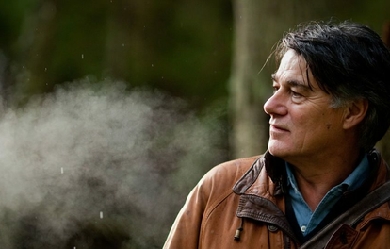
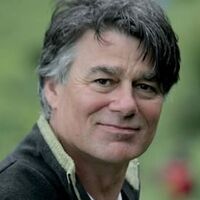
David Whyte (born 2 November 1955) is an English poet. He is quoted as saying that all of his poetry and philosophy is based on "the conversational nature of reality". Life and Work Whyte's mother was from Waterford, Ireland, and his father was a Yorkshireman. He attributes his poetic interest to both the songs and poetry of his mother's Irish heritage and to the landscape of West Yorkshire. He grew up in West Yorkshire and has commented that he had "a Wordsworthian childhood", in the fields, woods and on the moors. Whyte has a degree in Marine zoology from Bangor University. During his twenties Whyte worked as a naturalist and lived in the Galapagos Islands, where he experienced a near drowning on the southern shore of Hood Island. He led anthropological and natural history expeditions in the Andes the Amazon and the Himalayas. Whyte moved to the US in 1981 and began a career as a poet and speaker in 1986. From 1987 he began taking his poetry and philosophy to larger audiences including consulting and lecturing on organisational leadership models in the US and UK exploring the role of creativity in business. He has worked with companies such as Boeing, AT&T, NASA, Toyota, The Royal Air Force and the Arthur Andersen accountancy group. Work and vocation and "Conversational Leadership" is the subject of several of Whyte's prose books, including Crossing the Unknown Sea: Work as Pilgrimage of Identity, The Three Marriages: Reimagining Work, Self and Relationship and The Heart Aroused: Poetry and the Preservation of The Soul in Corporate America (top of business best seller list). Whyte has written seven volumes of poetry and four books of prose. Pilgrim is based on the human need to travel, "From here to there". The House of Belonging looks at the same human need for home. He describes his collection Everything Is Waiting For You (2003) as arising from the grief at the loss of his mother. His latest book is Consolations: The Solace, Nourishment and Underlying Meaning of Everyday Words, an attempt to "rehabilitate" many everyday words we often use only in pejorative or unimaginative ways. He has also written for newspapers including The Huffington Post and The Observer. He leads group poetry and walking journeys regularly in Ireland, England and Italy. He has an honorary degree from Neumann College, Pennsylvania, and is Associate Fellow of both Templeton College, Oxford, and the Saïd Business School, Oxford. Whyte runs the Many Rivers organisation and Invitas: The Institute for conversational leadership, which he founded in 2014. He has lived in Seattle and on Whidbey Island and currently lives in Langley, in the US Pacific North West and holds dual US-British citizenship. He has one daughter, Charlotte, from his second marriage to Dr. Leslie Cotter, from whom he divorced in November 2014, and a son, Brendan from his first marriage to Autumn Preble. Whyte has practised Zen and was a regular rock climber. He was a close friend of the Irish poet John O'Donohue. Poetry Collections * Pilgrim (2012) * River Flow: New & Selected Poems Revised Edition (Many Rivers Press 2012) * River Flow: New & Selected Poems 1984–2007 (Many Rivers Press 2007) * Everything is Waiting for You (Many Rivers Press 2003) * The House of Belonging (Many Rivers Press 1996) * Fire in the Earth (Many Rivers Press 1992) * Where Many Rivers Meet (Many Rivers Press 1990) * Songs for Coming Home (Many Rivers Press 1984) Prose * The Three Marriages: Reimagining Work, Self & Relationship (Riverhead 2009) * Crossing the Unknown Sea: Work as A Pilgrimage of Identity (Riverhead 2001) * The Heart Aroused: Poetry & the Preservation of the Soul in Corporate America (Doubleday/Currency 1994) * Consolations: The Solace Nourishment and Underlying Meaning of Everyday Words" (Many Rivers Press 2015) References Wikipedia—http://en.wikipedia.org/wiki/David_Whyte_(poet)
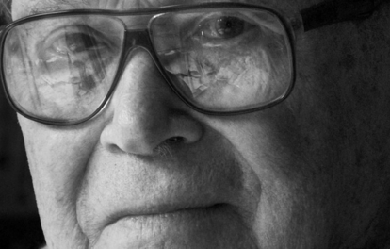
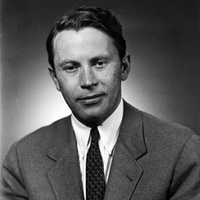
Richard Purdy Wilbur (born March 1, 1921) is an American poet and literary translator. He was appointed the second Poet Laureate Consultant in Poetry to the Library of Congress in 1987, and twice received the Pulitzer Prize for Poetry, in 1957 and again in 1989. Biography Early years Wilbur was born in New York City March 1, 1921 and grew up in North Caldwell, New Jersey. He graduated from Montclair High School in 1938, having worked on the school newspaper as a student there. He graduated from Amherst College in 1942 and then served in the United States Army from 1943 to 1945 during World War II. After the Army and graduate school at Harvard University, Wilbur taught at Wellesley College, then Wesleyan University for two decades and at Smith College for another decade. At Wesleyan, he was instrumental in founding the award-winning poetry series of the University Press. He received two Pulitzer Prizes for Poetry and, as of 2009, teaches at Amherst College. He is also on the editorial board of the literary magazine The Common, based at Amherst College. Career When only 8 years old, Wilbur published his first poem in John Martin’s Magazine. His first book, The Beautiful Changes and Other Poems, appeared in 1947. Since then he has published several volumes of poetry, including New and Collected Poems (Faber, 1989). Wilbur is also a translator, specializing in the 17th century French comedies of Molière and the dramas of Jean Racine. His translation of Tartuffe has become the standard English version of the play, and has been presented on television twice (a 1978 production is available on DVD.) In addition to publishing poetry and translations, he has also published several children’s books including Opposites, More Opposites, and The Disappearing Alphabet. Continuing the tradition of Robert Frost and W. H. Auden, Wilbur’s poetry finds illumination in everyday experiences. Less well-known is Wilbur’s foray into lyric writing. He provided lyrics to several songs in Leonard Bernstein’s 1956 musical, Candide, including the famous “Glitter and Be Gay” and “Make Our Garden Grow.” He has also produced several unpublished works including “The Wing” and “To Beatrice”. His honors include the 1983 Drama Desk Special Award and the PEN Translation Prize for his translation of The Misanthrope, both the Pulitzer Prize for Poetry and the National Book Award for Things of This World (1956), the Edna St Vincent Millay award, the Bollingen Prize, and the Chevalier, Ordre des Palmes Académiques. He was elected a Fellow of the American Academy of Arts and Sciences in 1959. In 1987 Wilbur became the second poet, after Robert Penn Warren, to be named U.S. Poet Laureate after the position’s title was changed from Poetry Consultant. In 1988, he won the Aiken Taylor Award for Modern American Poetry and then in 1989 he won a second Pulitzer, this one for his New and Collected Poems. On October 14, 1994, he received the National Medal of Arts from President Bill Clinton. He also received the PEN/Ralph Manheim Medal for Translation in 1994. In 2003, Wilbur was inducted into the American Theater Hall of Fame. In 2006, Wilbur won the Ruth Lilly Poetry Prize. In 2010 he won the National Translation Award for the translation of The Theatre of Illusion by Pierre Corneille. In 2012, Yale conferred an honorary degree, Doctor of Letters, on Wilbur. Bibliography Poetry collections * 1947: The Beautiful Changes, and Other Poems * 1950: Ceremony, and Other Poems * 1955: A Bestiary * 1956: Things of This World - won Pulitzer Prize for Poetry and National Book Award, both in 1957 * 1961: Advice to a Prophet, and Other Poems * 1969: Walking to Sleep: New Poems and Translations * 1976: The Mind-Reader: New Poems * 1988: New and Collected Poems - won Pulitzer Prize for Poetry in 1989 * 2000: Mayflies: New Poems and Translations * 2004: Collected Poems, 1943–2004 * 2010: Anterooms * 2012: The Nutcracker Selected poems available online Prose collections * 1976: Responses: Prose Pieces, 1953–1976 * 1997: The Catbird’s Song: Prose Pieces, 1963–1995 Translated plays from other authors Translated from Molière * The Misanthrope (1955/1666) * Tartuffe (1963/1669) * The School for Wives (1971/1662) * The Learned Ladies (1978/1672) * School for Husbands (1992/1661) * The Imaginary Cuckold, or Sganarelle (1993/1660) * Amphitryon (1995/1668) * The Bungler (2000/1655) * Don Juan (2001/1665) * Lovers’ Quarrels (2009/1656) From Jean Racine * Andromache (1982/1667) * Phaedra (1986/1677) * The Suitors (2001/1668) From Pierre Corneille * The Theatre of Illusion (2007/1636) * Le Cid (2009/1636) * The Liar (2009/1643) Sources * President and first Lady honor Artists and Scholars, Clinton, The White House– Office of the Press Secretary, 1994-10-13 . References Wikipedia—https://en.wikipedia.org/wiki/Richard_Wilbur
_-_Google_Art_Project.jpg)
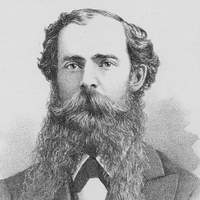
Henry Clay Work (October 1, 1832– June 8, 1884) was an American composer and songwriter. Early life and education Work was born in Middletown, Connecticut, to Alanson and Amelia (Forbes) Work. His father opposed slavery, and Work was himself an active abolitionist and Union supporter. His family’s home became a stop on the Underground Railroad, assisting runaway slaves to freedom in Canada, for which his father was once imprisoned. Work was self-taught in music. By the time he was 23, he worked as a printer in Chicago, specializing in setting musical type. He allegedly composed in his head as he worked, without a piano, using the noise of the machinery as an inspiration. His first published song was “We Are Coming, Sister Mary”, which eventually became a staple in Christy’s Minstrels shows. Career Work produced much of his best material during the Civil War. In 1862 he published “Kingdom Coming” using his own lyrics based upon snippets of Negro speech he had heard. This use of slave dialect (Irish too was a favourite) tended to limit the appeal of Work’s works and make them frowned upon today. However, “Kingdom Coming” appeared in the Jerome Kern show “Good Morning, Dearie” on Broadway in 1921, and was heard in the background in the 1944 Judy Garland film “Meet Me in St. Louis”. 1862 also saw his novelty song “Grafted Into the Army”, followed in 1863 by “Babylon is Fallen” ("Don’t you see the black clouds risin’ ober yonder"), “The Song of a Thousand Years”, and “God Save the Nation”. His 1864 effort “Wake Nicodemus” was popular in minstrel shows. In 1865 he wrote his greatest hit, “Marching Through Georgia”, inspired by Sherman’s march to the sea at the end of the previous year. Thanks to its lively melody, the song was immensely popular, its million sheet-music sales being unprecedented. It is a cheerful marching song and has since been pressed into service many times, including by Princeton University as a football fight song. Timothy Shay Arthur’s play Ten Nights in a Barroom, had Work’s 1864 “Come Home, Father”, a dirgesome song bemoaning the demon drink: too mawkish for modern tastes, but always sung at Temperance Meetings. Settling into sentimental balladry, Work had significant post-Civil War success with the “The Lost Letter”, and “The Ship That Never Returned”—a tune reused in the "Wreck of the Old 97" and “MTA”. A massive hit was “My Grandfather’s Clock”, published in 1876, which was introduced by Sam Lucas in Hartford, Connecticut, and again secured more than a million sales of the sheet music, along with popularizing the phrase “grandfather clock” to describe a longcase clock.” By 1880 Work was living in New York City, giving his occupation as a musician. He died in Hartford two years later at the age of 51. He was survived by his wife, Sarah Parker Work, and one of their four children. Henry Clay Work was inducted into the Songwriters Hall of Fame in 1970. He was a distant cousin to Frances Work, a great-grandmother of Diana, Princess of Wales. Songs Among the best-known of Henry Clay Work’s 75 compositions are: “Kingdom Coming” (c. 1863) “Come Home, Father” (1864) “Wake Nicodemus” (1864) “Marching Through Georgia” (1865) “The Ship That Never Returned” (1868) “Crossing the Grand Sierras” (1870) “My Grandfather’s Clock” (1876) References Wikipedia—https://en.wikipedia.org/wiki/Henry_Clay_Work

Hello silly internet, I'm Miran. By day, I manage the awesome USCA Support organization for a Seattle-based software company. By night, I am both a poet and a dreamer. I live in Kirkland, WA and have been writing poetry since I was a child. I lost my muse for a great many years, and have trying to rekindle its flame. Please enjoy this humble offering of poetry. (\(\ ( . .) - Miran c(“)(“)
.jpg)
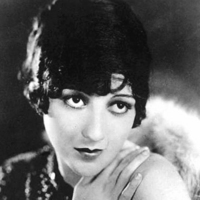
Elinor Morton Wylie (September 7, 1885– December 16, 1928) was an American poet and novelist popular in the 1920s and 1930s. “She was famous during her life almost as much for her ethereal beauty and personality as for her melodious, sensuous poetry.” Life Family and childhood Elinor Wylie was born Elinor Morton Hoyt in Somerville, New Jersey, into a socially prominent family. Her grandfather, Henry M. Hoyt, was a governor of Pennsylvania. Her aunt was Helen Hoyt, a minor poet. Her parents were Henry Martyn Hoyt, Jr., who would be United States Solicitor General from 1903 to 1909; and Anne Morton McMichael (born July 31, 1861 in Pa.). Their other children were: Henry Martyn Hoyt (May 8, 1887, in Pa.– August 25, 1920 in New York City) who married Alice Gordon Parker (1885–1951) Constance A. Hoyt (May 20, 1889, in Pa.– 1923 in Bavaria, Germany) who married Ferdinand von Stumm-Halberg on March 30, 1910, in Washington, D.C. Morton McMichael Hoyt (April 4, 1899, in Washington, D.C. - August 21, 1949, in Philadelphia, Pennsylvania), three times married and divorced Eugenia Bankhead, known as “Sister” and sister of Tallulah Bankhead Nancy McMichael Hoyt (born October 1, 1902, in Washington, D.C.) romance novelist who wrote Elinor Wylie: The Portrait of an Unknown Woman (1935). She married Edward Davison Curtis; they divorced in 1932. Elinor was educated at Miss Baldwin’s School (1893–97), Mrs. Flint’s School (1897–1901), and finally Holton-Arms School (1901–04). She was “trained for the life of a debutante and a society wife”. “As a girl she was already bookish—not in the languid or inactive sense but girded, embraced by books, between whose covers lay the word-perfect world she sought. She grew into a tall, dark beauty in the classic 1920s style. Some who knew her claimed she was the most striking woman they ever met.” Marriages and scandal The future Elinor Wylie became notorious, during her lifetime, for her multiple affairs and marriages. On the rebound from an earlier romance she met her first husband, Harvard graduate Philip Simmons Hichborn (1882–1912), the son of a rear-admiral. She eloped with him and they were married on December 13, 1906. She had a son by him, Philip Simmons Hichborn, Jr., born September 22, 1907 in Washington, D.C. However, “Hichborn, a would-be poet, was emotionally unstable”, and Elinor found herself in an unhappy marriage. She also found herself being stalked by Horace Wylie, “a Washington lawyer with a wife and three children”, who "was 17 years older than Elinor. He stalked her for years, appearing wherever she was.” Following the death in November 1910 of Elinor’s father, she left her husband and son, and began living with Wylie. “After being ostracized by their families and friends and mistreated in the press, the couple moved to England” where they lived “under the assumed name of Waring; this event caused a scandal in the Washington, D.C., social circles Elinor Wylie had frequented”. Philip Simmons Hitchborn Sr. committed suicide in 1912. With Horace Wylie’s encouragement, in 1912 Elinor anonymously published Incidental Number, a small book of poems she had written in the previous decade. Between 1914 and 1916, Elinor tried to have a second child, but “suffered several miscarriages... as well as a stillbirth and... a premature child who died after one week.” After Wylie’s wife agreed to a divorce, the couple returned to the United States. Elinor and Horace Wylie married in 1916; “By that time, however, the couple were drawing apart.” Elinor began spending time in literary circles in New York City—"her friends there numbered John Peale Bishop, Edmund Wilson, John Dos Passos, Sinclair Lewis, Carl Van Vechten, and... William Rose Benét.” Her last marriage (in 1923) was to William Rose Benét (February 2, 1886– May 4, 1950), who was part of her literary circle and brother of Stephen Vincent Benét. By the time of Wylie’s third book of poetry, Trivial Breath in 1928, her marriage with Benét was also in trouble, and they had agreed to live apart. She moved to England and fell in love with the husband of a friend, Henry de Clifford Woodhouse, to whom she wrote a series of 19 sonnets which she published privately in 1928 as Angels and Earthly Creatures (also included in her 1929 book of the same name). Career Elinor Wylie’s literary friends encouraged her to submit her verse to Poetry magazine. Poetry published four of her poems, including what became “her most widely anthologized poem, 'Velvet Shoes’”, in May 1920. With Benét now acting as her informal literary agent, "Wylie left her second husband and moved to New York in 1921". The Dictionary of Literary Biography (DLB) says: “She captivated the literary world with her slender, tawny-haired beauty, personal elegance, acid wit, and technical virtuosity.” In 1921, Wylie’s first commercial book of poetry, Nets to Catch the Wind, was published. The book, “which many critics still consider to contain her best poems,” was an immediate success. Edna St. Vincent Millay and Louis Untermeyer praised the work. The Poetry Society awarded her its Julia Ellsworth Ford Prize. In 1923 she published Black Armor, which was “another successful volume of verse”. The New York Times enthused: “There is not a misplaced word or cadence in it. There is not an extra syllable.” 1923 also saw the publication of Wylie’s first novel, Jennifer Lorn, to considerable fanfare. Van Vechten “organized a torchlight parade through Manhattan to celebrate its publication”. She would write "four historical novels widely admired when first published, although interest in them diminished in the masculine era of the 1940s and 50s". She worked as the poetry editor of Vanity Fair magazine between 1923 and 1925. She was an editor of Literary Guild, and a contributing editor of The New Republic, from 1926 through 1928. Wylie was an “admirer of the British Romantic poets, and particularly of Shelley, to a degree that some critics have seen as abnormal”. “A friend claimed she was 'positively dotty’ about Shelley, not just making him her model in art and life but on occasion actually 'seeing’ the dead poet.” She wrote a 1926 novel, The Orphan Angel, in which “the great young poet is rescued from drowning off an Italian cape and travels to America, where he encounters the dangers of the frontier.” By the time of Wylie’s third book of poetry, Trivial Breath in 1928, her marriage with Benét was also in trouble, and they had agreed to live apart. She moved to England and fell in love with the husband of a friend, Henry de Clifford Woodhouse, to whom she wrote a series of 19 sonnets which she published privately in 1928 as Angels and Earthly Creatures (also included in her 1929 book of the same name). Elinor Wylie died of a stroke at Benét’s New York apartment, while working with him preparing the 1929 Angels and Earthly Creatures for publication. Writing Poetry Wylie’s “highly polished, articulate, and deeply emotional verse shows the influence of the metaphysical poets,” such as John Donne, George Herbert, and Andrew Marvell. If her poetry is derivative of anyone, though, that would be “of the British Romantic poets, and particularly of Shelley,” whom she admired “to a degree that some critics have seen as abnormal.” In her first book, Nets to Catch the Wind, “Stanzas and lines were quite short, and the effect of her images was of a highly detailed, polished surface. Often, her poems expressed a dissatisfaction with the realities of life on the part of a speaker who aspired to a more gratifying world of art and beauty.” Louis Untermeyer wrote that the book “impresses immediately because of its brilliance... which, at first, seems to sparkle without burning.... It is the brilliance of moon-light corruscating on a plain of ice. But if Mis. Wylie seldom allows her verses to grow agitated, she never permits them to remain dull.... in 'August’ the sense of heat is conveyed by tropic luxuriance and contrast; in 'The Eagle and the Mole’ she lifts didacticism to a proud level... never has snow-silence been more unerringly communicated than in ‘Velvet Shoes.’” Other notable poems include “Wild Peaches,” “A Proud Lady,” “Sanctuary,” “Winter Sleep,” “Madman’s Song,” “The Church-Bell,” and “A Crowded Trolley Car.” In Black Armor (1923), “the intellect has grown more fiery, the mood has grown warmer, and the craftsmanship is more dazzling than ever.... she varies the perfect modulation with rhymes that are delightfully acrid and unique departures which never fail of success... from the nimble dexterity of a rondo like 'Peregrine’ to the introspective poignance of ‘Self Portrait,’ from the fanciful 'Escape’ to the grave mockery of ‘Let No Charitable Hope.’” Trivial Breath (1928) “is the work of a poet in transition. At times the craftsman is uppermost; at times the creative genius.” Wylie’s biographer Stanley Olson called the sonnets that begin 1929's Angels and Earthly Creatures “perhaps, her finest achievement.... The love in these lyrics is not a private love, not a variety of confession, but an abstracted one.... The nineteen sonnets are paced with strength, energy and undeniable feeling, sustained as a group by shifting through the complexities and vicissitudes of love.” Untermeyer also praised the sonnets, but added: “The other poems share this intensity. 'This Corruptible’ is both visionary and philosophic; 'O Virtuous Light’ deals with that piercing clarity, the intuition... The other poems are scarcely less uplifted, finding their summit in 'Hymn to Earth, which is one of her deeper poems and one which is certain to endure.” Fiction Wylie’s four novels “are delicately wrought and filled with ironic fancy”. They were "widely admired when first published, although interest in them diminished in the masculine era of the 1940s and 50s".
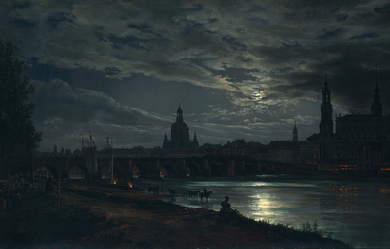
In the eternal dusk of my tormented mind, the relentless cascade of thoughts blurs the line between truth and illusion, a ceaseless torrent of existential questioning. Within this labyrinth of fractured perceptions echoes of the dreadful dance with the whispers of the soul, birth the verse that spills like ink from a fractured heart.
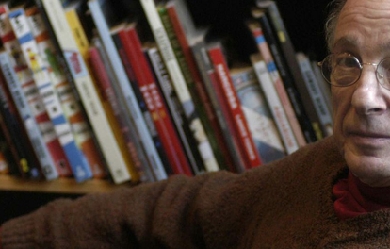
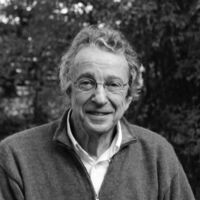
Charles Kenneth “C. K.” Williams (November 4, 1936 – September 20, 2015) was an American poet, critic and translator. Williams won nearly every major poetry award. Flesh and Blood won the National Book Critics Circle Award in 1987. Repair (1999) won the 2000 Pulitzer Prize for Poetry, was a National Book Award finalist and won the Los Angeles Times Book Prize. The Singing won the National Book Award, 2003 and in 2005 Williams received the Ruth Lilly Poetry Prize. The 2012 film Tar related aspects of Williams' life using his poetry. C. K. Williams grew up in Newark, New Jersey and graduated from Columbia High School in Maplewood. He later briefly attended Bucknell University and graduated from the University of Pennsylvania. While at Penn he studied with the romantic scholar, Morse Peckham, and spent a great deal of time in the circle of young architects who studied with and worked for the great architect Louis Kahn. In an essay, “Beginnings,” he acknowledged Kahn's dedication and patience as essential to his notion of the life of an artist. Life Williams lived for a period in Philadelphia, where he worked for a number of years as a part-time psychotherapist for adolescents and young adults, a ghost-writer and editor, then began teaching, first at the YM-YWHA in Philadelphia, then at several universities in Pennsylvania, Beaver College, Drexel, and Franklin and Marshall. He subsequently taught at many other universities, including Columbia, NYU, Boston University, the University of California, both at Irvine and Berkeley, before finally becoming a professor at George Mason University, then moving in 1995 to Princeton University. He met his wife, Catherine Mauger, a French jeweler, in 1973, and they have a son who is now a noted painter, Jed Williams. He has a daughter from an earlier marriage, Jessie Williams Burns, who is a writer. He lived half the year near Princeton, and the rest in Normandy in France. He was a member of the American Academy of Arts and Letters. Williams died of multiple myeloma on September 20, 2015 at his home in Hopewell, New Jersey. Works His first book, Lies, was published in 1969, and he had published many collections of poetry, culminating in his Collected Poems, of which Peter Campion wrote in The Boston Globe: "Throughout the five decades represented in his new Collected Poems, Williams has maintained the most sincere, and largest, ambitions. Like Yeats and Lowell before him, he writes from the borderland between private and public life….[His poems] join skeptical intelligence and emotional sincerity, in a way that dignifies all of our attempts to make sense of the world and of ourselves. C. K. Williams has set a new standard for American poetry." Another collection, Wait, appeared in 2010, and another, Writers Writing Dying, came out in 2012. He wrote a memoir, Misgivings, which appeared in 2000, a collection of essays, Poetry and Consciousness (1999), and a critical study of Walt Whitman, On Whitman (2010). Williams was also an acclaimed translator, notably of Sophocles' Women of Trachis and Euripides' The Bacchae, as well as of the Polish poet Adam Zagajewski and the French poet Francis Ponge. He also published several children's books. References Wikipedia—https://en.wikipedia.org/wiki/C._K._Williams
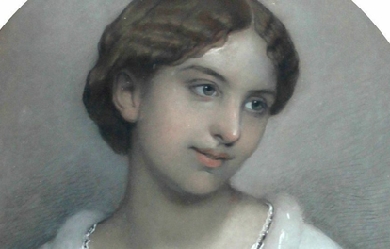

Augusta Webster (30 January 1837 - 5 September 1894) born in Poole, Dorset as Julia Augusta Davies, was an English poet, dramatist, essayist, and translator. The daughter of Vice-admiral George Davies and Julia Hume she spent her younger years on board the ship he was stationed, the Griper. She studied Greek at home, taking a particular interest in Greek drama, and went on to study at the Cambridge School of Art. She published her first volume of poetry in 1860 under the pen name Cecil Homes. In 1863 she married Thomas Webster, a fellow at Trinity College, Cambridge. They had a daughter, Augusta Georgiana, who married Reverend George Theobald Bourke, a younger son of the Joseph Bourke, 3rd Earl of Mayo. Much of Webster’s writing explored the condition of women, and she was a strong advocate of women’s right to vote, working for the London branch of the National Committee for Women’s Suffrage. Webster was the first female writer to hold elective office, having been elected to the London School Board in 1879 and 1885. In 1885 she travelled to Italy in an attempt to improve her failing health. She died on September 5, 1894, at 57. During her lifetime her writing was acclaimed and she was considered by some the successor to Elizabeth Barrett Browning. After her death, however, her reputation quickly declined. Since the mid-1990s she has gained increasing critical attention from scholars such as Isobel Armstrong, Angela Leighton, and Christine Sutphin, Her best-known poems include three long dramatic monologues spoken by women: “A Castaway,” “Circe”, and “The Happiest Girl In The World”, as well as a posthumously published sonnet-sequence, “Mother and Daughter”.


As a Poet I must admit I am a student and admirer of the late Langston Hughes as well as many other poets and writers from different walks of life. I always enjoy writers that use poetry as a voice to speak out about social and spiritual issues. My poems are usually my inner expression of thoughts that I experience while on this spiritual journey called life.
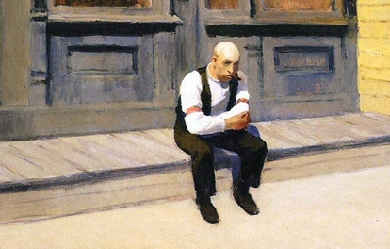
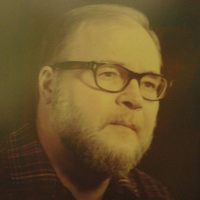
James Arlington Wright (December 13, 1927– March 25, 1980) was an American poet. Life Wright first emerged on the literary scene in 1956 with The Green Wall, a collection of formalist verse that was awarded the prestigious Yale Younger Poets Prize. But by the early 1960s, Wright, increasingly influenced by the Spanish language surrealists, had dropped fixed meters. His transformation achieved its maximum expression with the publication of the seminal The Branch Will Not Break (1963), which positioned Wright as curious counterpoint to the Beats and New York Schools, which predominated on the American coasts. This transformation had not come by accident, as Wright had been working for years with his friend Robert Bly, collaborating on the translation of world poets in the influential magazine The Fifties (later The Sixties). Such influences fertilized Wright’s unique perspective and helped put the Midwest back on the poetic map. Wright had discovered a terse, imagistic, free verse of clarity, and power. During the next ten years Wright would go on to pen some of the most beloved and frequently anthologized masterpieces of the century, such as “A Blessing,” “Autumn Begins in Martins Ferry, Ohio,” and “I Am a Sioux Indian Brave, He Said to Me in Minneapolis.” Wright’s son Franz Wright was also a poet. Together they are the only parent/child pair to have won a Pulitzer Prize in the same category (Poetry). Poetry Wright’s early poetry is relatively conventional in form and meter, especially compared with his later, looser poetry. Although most of his fame comes from his original poetry, Wright made a contribution to another area or literary modernism– the translation. Ezra Pound insisted that translation was in itself an art of the highest creative order. His work with translations of German and South American poets, as well as the poetry and aesthetic position of Robert Bly, had considerable influence on his own poems; this is most evident in The Branch Will Not Break, which departs radically from the formal style of Wright’s previous book, Saint Judas. In addition to his own poetry, he also published loose translations of René Char’s hermetic poems. His poetry often deals with the disenfranchised, or the American outsider. Wright suffered from depression and bipolar mood disorders and also battled alcoholism his entire life. He experienced several nervous breakdowns, was hospitalized, and was subjected to electroshock therapy. His dark moods and focus on emotional suffering were part of his life and often the focus of his poetry, although given the emotional turmoil he experienced personally, his poems can be optimistic in expressing a faith in life and human transcendence. In The Branch Will Not Break, the enduring human spirit becomes thematic. Nevertheless, the last line of his poem “Lying in a Hammock at William Duffy’s Farm in Pine Island, Minnesota” famously ends, “I have wasted my life.” Technically, Wright was an innovator, especially in the use of his titles, first lines, and last lines, which he used to great dramatic effect in defense of the lives of the disenfranchised. He is equally well known for his tender depictions of the bleak landscapes of the post-industrial American Midwest. Since his death, Wright has developed a cult following, transforming him into a seminal writer of significant influence. Hundreds of writers gathered annually for decades following his death to pay tribute at the James Wright Poetry Festival held from 1981 through 2007 in Martins Ferry. His 1972 Collected Poems won the Pulitzer Prize. In addition to his other awards, Wright received a grant from the Rockefeller Foundation. Works Published in his lifetime * Unless otherwise noted, year is when published: * The Green Wall (Yale University Press, 1957) * Saint Judas (Wesleyan University Press, 1959) * The Branch Will Not Break (Wesleyan University Press, 1963) * Autumn Begins in Martins Ferry, Ohio—Broadside (1963) * Shall We Gather at the River (Wesleyan University Press, 1967) * Collected Poems (Wesleyan University Press, 1971) * Two Citizens (Farrar, Straus and Giroux, 1973) * Moments of the Italian Summer (Dryad Press, 1976) * To a Blossoming Pear Tree (Farrar, Straus and Giroux, 1977) * This Journey (1982) Published posthumously * This Journey (1982; completed in 1980) * The Temple at Nîmes (1982) * James Wright, In Defense Against This Exile. Letters To Wayne Burns., edited with an introduction by John R. Doheny (1985) * Above the River - the Complete Poems, introduction by Donald Hall (1992) * Selected Poems (2005) * A Wild Perfection: The Selected Letters of James Wright (2005) * The Delicacy and Strength of Lace: Letters Between Leslie Marmon Silko and James Wright., edited by Anne Wright and Joy Harjo (2009) References Wikipedia—https://en.wikipedia.org/wiki/James_Wright_(poet)
I decide to start writing because someone close to me likes my style of writing. Being a proud father of my son, I write about my experiences with him or by myself. As well as my struggles living through my depression and ADHD which often make living really difficult. However through writing I hope others will be able to relate to these poems and know they're not alone.
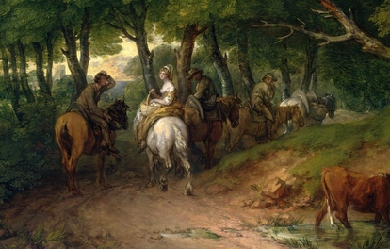
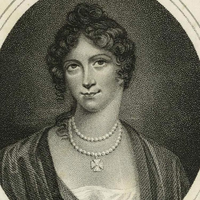
Helen Maria Williams (17 June 1759– 15 December 1827) was a British novelist, poet, and translator of French-language works. A religious dissenter, she was a supporter of abolitionism and of the ideals of the French Revolution; she was imprisoned in Paris during the Reign of Terror, but nonetheless spent much of the rest of her life in France. A controversial figure in her own time, the young Williams was favourably portrayed in a 1787 poem by William Wordsworth, but (especially at the height of the French Revolution) she was portrayed by other writers as irresponsibly politically radical and even as sexually wanton. Life She was born on 17 June 1759 in London to a Scottish mother, Helen Hay, and a Welsh army officer father, Charles Williams. Her father died when she was eight; the remnant of the family moved to Berwick-upon-Tweed, where she had what she herself would describe in the preface to a 1786 book of poems as “a confined education”. In 1781 she moved to London and met Andrew Kippis, who would have great influence on her literary career and political views and brought her into contact with the leading London intellectuals of her time. Her 1786 Poems touch on topics ranging from religion to a critique of Spanish colonial practices. She allied herself with the cult of feminine sensibility, deploying it politically in opposition to war ("Ode on the Peace", a 1786 poem about Peru) and slavery (the abolitionist “Poem on the Bill Lately Passed for Regulating the Slave Trade”, 1788). In the context of the Revolution Controversy, she came down on the side of the revolutionaries in her 1790 novel Julia and defied convention by travelling alone to revolutionary France, where she was hosted by Mme. Du Fossé, who had earlier, in London, given her lessons in French. Her letters from France marked a turn from being primarily a writer of poetry to one of prose. She enthusiastically attended the Fête de la Fédération on the anniversary of the storming of the Bastille and returning briefly to London in 1791 was a staunch, though not completely uncritical, defender of the Revolution. Returning to France in July 1791, she published a poem “A Farewell for two Years to England”; in fact she briefly visited England again in 1792, but only to persuade her mother and her sisters, Cecilia and Persis, to join her in France just as the country was moving toward the more violent phases of its revolution. After the September Massacres of 1792, she allied herself with the Girondists; as a saloniere, she also hosted Mary Wollstonecraft, Francisco de Miranda and Thomas Paine. After the violent downfall of the Gironde and the rise of the Reign of Terror, she and her family were thrown into the Luxembourg prison where she was allowed to continue working on translations of French-language works into English, including what would prove to be a popular translation of Bernardin St. Pierre’s novel Paul et Virginie, to which she appended her own prison sonnets. Upon her release, she travelled with John Hurford Stone to Switzerland. She was harshly criticised for this since Stone, separated from an unfaithful wife, was still legally a married man; the subsequent history of Williams and Stone’s relationship only tended to confirm the rumours. Nonetheless, her few poems from this period continue to express Dissenting piety and were published in volumes with those of other religiously like-minded poets. In 1798, she published A Tour in Switzerland, which included an account of her travels, political commentary, and the poem “A Hymn Written Amongst the Alps”. Williams’ 1801 Sketches of the State of Manners and Opinions in the French Republic showed a continued attachment to the original ideals of the French Revolution but a growing disenchantment with the rise of Napoleon; as emperor, he would declare her ode “The Peace signed between the French and the English” (also known as the “Ode on the Peace of Amiens”) to be treasonable to France. Nonetheless, he proved to be, in this respect, more lenient than the revolutionary government had been to this now-famous international literary figure: she spent a single day in prison and continued to live and write in Paris. After the Bourbon Restoration, she became a naturalised French citizen in 1818; nonetheless, in 1819 she moved to Amsterdam to live with a nephew she had helped raise. However, she was unhappy in Amsterdam and soon returned to Paris, where, until her death in 1827, she continued to be an important interpreter of French intellectual currents for the English-speaking world.
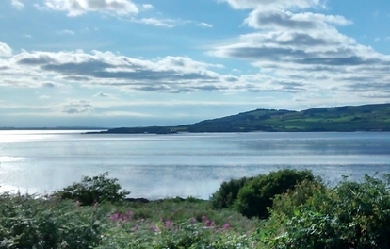
Poetry is something I do to try and understand the emotions and voice in the back of my head. It's highly therapeutic for me just now, and as a result my work isn't always nice or happy. Sometimes it's quite brutal. But I feel poetry is a multi-faceted tool that should reflect all aspects of life, both good and bad, so this isn't necessarily a negative thing. I am still learning, so bear with me. My aim is to try and produce something accessible to everyone, but also meaningful to me. I also want to make my poetry less insular and more outward looking. Hopefully I'm on the right path with at least some of these goals. Please comment to let me know how I'm getting on.
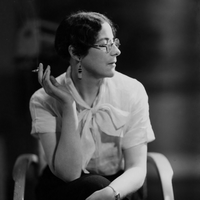
Sylvia Townsend Warner (6 December 1893– 1 May 1978) was an English novelist and poet. She also made a contribution to musicology as a young woman. Life Sylvia Nora Townsend Warner was born at Harrow on the Hill, Middlesex, the only child of George Townsend Warner and his wife Eleanor “Nora” Mary (née Hudleston). Her father was a house-master at Harrow School and was, for many years, associated with the prestigious Harrow History Prize which was renamed the Townsend Warner History Prize in his honour, after his death in 1916. As a child, Townsend Warner was home-schooled by her father. She enjoyed a seemingly idyllic childhood in rural Devonshire, but was strongly affected by her father’s death. She moved to London and worked in a munitions factory at the outbreak of World War I. Warner was friendly with a number of the “Bright young things” of the 1920s. Her first major success was the novel Lolly Willowes. In 1923, she met T. F. Powys, whose writing influenced her own and whose work she in turn encouraged. It was at Powys’ home that Warner, in 1930, first met Valentine Ackland, a young poet; the two women fell in love and settled at Frome Vauchurch, Dorset. Alarmed by the growing threat of fascism, they were active in the Communist Party, and in 1937 visited Valencia and Benicàssim, in Spain, on behalf of the Red Cross during the Civil War. They lived together from 1930 until Ackland’s death in 1969. Ackland and Warner are buried together at St Nicholas, Chaldon Herring, Dorset. Warner’s political engagement continued for the rest of her life, even after she became disillusioned with communism. Work Early in her career Warner researched 15th and 16th century music. From 1917 she was in regular employment as one of the editors of Tudor Church Music, ten volumes published by Oxford University Press in the 1920s with the support of the Carnegie UK Trust. She obtained the work through the influence of her lover and music teacher Sir Percy Buck, who was on the editorial committee. The lead editor was initially Sir Richard Terry, who as the Master of Music at Westminster Cathedral, had been a pioneer in the revival of Tudor vocal repertoire. Warner was involved in travelling to study source material and in transcribing the music into modern musical notation. Warner also published on the subject of musical notation including a contribution to the Oxford History of Music (in the introductory volume of 1929). In 1934 she published a joint collection of poems with Ackland, Whether a Dove or a Seagull. She was encouraged to write fiction by David Garnett. Warner’s novels included Lolly Willowes (1926), Mr Fortune’s Maggot (1927), Summer Will Show (1936), and The Corner That Held Them (1948). Recurring themes are evident in a number of her works. These include a rejection of Christianity (in Mr Fortune’s Maggot, and in Lolly Willowes, where the protagonist becomes a witch); the position of women in patriarchal societies (Lolly Willowes, Summer Will Show, The Corner that Held Them); ambiguous sexuality, or bisexuality (Lolly Willowes, Mr Fortune’s Maggot, Summer Will Show); and lyrical descriptions of landscape. Mr Fortune’s Maggot, about a missionary in the Pacific Islands, has been described as a “satirical, anti-imperialist novel”. In Summer Will Show, the heroine, Sophia Willoughby, travels to Paris during the 1848 Revolution and falls in love with a woman. Warner’s short stories include the collections A Moral Ending and Other Stories, The Salutation, More Joy in Heaven, The Cat’s Cradle Book, A Garland of Straw, The Museum of Cheats. Winter in the Air, A Spirit Rises, A Stranger with a Bag, The Innocent and the Guilty, and One Thing Leading to Another. Her final work was a series of linked short stories set in the supernatural Kingdoms of Elfin. Many of these stories were published in The New Yorker. In addition to fiction, Warner wrote anti-fascist articles for such leftist publications as Time and Tide and Left Review. After the death of the novelist T. H. White, Warner was given access to his papers. She published a biography which The New York Times declared “a small masterpiece which may well be read long after the writings of its subject have been forgotten.” White’s long-time friend and literary agent, David Higham, however, questioned Warner’s work, suggesting a bias in her approach due to her own homosexuality: he gave Warner the address of one of White’s lovers “so that she could get in touch with someone so important in Tim’s story. But she never, the girl told me, took that step. So she was able to present Tim in such a light that a reviewer could call him a raging homosexual. Perhaps a heterosexual affair would have made her blush.” Warner produced several books of poetry, including Opus 7, a book-length pastoral poem about an elderly female flower-seller. Although Warner never wrote an autobiography, Scenes of Childhood was compiled after her death on 1 May 1978 at age 84, based on short reminiscences published over the years in the New Yorker. She also translated Contre Saint-Beuve by Marcel Proust from the original French into English. In the 1970s, she became known as a significant writer of feminist or lesbian sentiment, and her novels were among the earlier ones to be revived by Virago Press. Selected letters of Warner and Valentine Ackland have been published twice: Wendy Mulford edited a collection titled This Narrow Place in 1988, and ten years later Susanna Pinney published another selection, Jealousy in Connecticut.
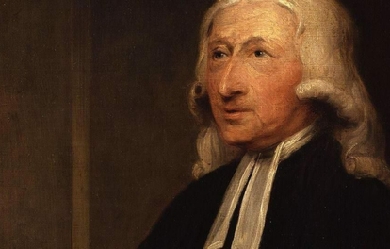
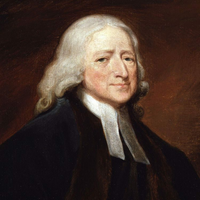
John Wesley (/ˈwɛsli, ˈwɛzli/; 28 June [O.S. 17 June] 1703– 2 March 1791) was an Anglican minister and theologian who, with his brother Charles and fellow cleric George Whitefield, is credited with the foundation of the evangelical movement known as Methodism. His work and writings also played a leading role in the development of the Holiness movement and Pentecostalism. Educated at Charterhouse School and Oxford University, Wesley was elected a fellow of Lincoln College, Oxford in 1726 and ordained a priest two years later. Returning to Oxford in 1729 after serving as curate at his father’s parish, he led the Holy Club, a society formed for the purpose of study and the pursuit of a devout Christian life; it had been founded by his brother Charles, and counted George Whitefield among its members. After an unsuccessful ministry of two years at Savannah in the Georgia Colony, Wesley returned to London and joined a religious society led by Moravian Christians. On 24 May 1738 he experienced what has come to be called his evangelical conversion, when he felt his “heart strangely warmed”. He subsequently departed from the Moravians, beginning his own ministry. A key step in the development of Wesley’s ministry was, like Whitefield, to travel and preach outdoors. In contrast to Whitefield’s Calvinism, Wesley embraced the Arminian doctrines that dominated the Church of England at the time. Moving across Great Britain and Ireland, he helped form and organise small Christian groups that developed intensive and personal accountability, discipleship and religious instruction. Most importantly, he appointed itinerant, unordained evangelists to travel and preach as he did and to care for these groups of people. Under Wesley’s direction, Methodists became leaders in many social issues of the day, including prison reform and the abolition of slavery. Although he was not a systematic theologian, Wesley argued for the notion of Christian perfection and against Calvinism– and, in particular, against its doctrine of predestination. He held that, in this life, Christians could achieve a state where the love of God “reigned supreme in their hearts”, giving them outward holiness. His evangelicalism, firmly grounded in sacramental theology, maintained that means of grace were the manner by which God sanctifies and transforms the believer, encouraging people to experience Jesus Christ personally. Throughout his life, Wesley remained within the established Anglican church, insisting that the Methodist movement lay well within its tradition. Although sometimes maverick in his interpretation and use of church policy, he became widely respected and, by the end of his life, had been described as “the best loved man in England”. Early life John Wesley was born in 1703 in Epworth, 23 miles (37 km) north-west of Lincoln, as the fifteenth child of Samuel Wesley and his wife Susanna Wesley (née Annesley). Samuel Wesley was a graduate of the University of Oxford and a poet who, from 1696, was rector of Epworth. He married Susanna, the twenty-fifth child of Samuel Annesley, a dissenting minister, in 1689. Ultimately, she bore him nineteen children, of which nine lived beyond infancy. She and Samuel Wesley had become members of the Church of England as young adults. As in many families at the time, Wesley’s parents gave their children their early education. Each child, including the girls, was taught to read as soon as they could walk and talk. They were expected to become proficient in Latin and Greek and to have learned major portions of the New Testament by heart. Susanna Wesley examined each child before the midday meal and before evening prayers. Children were not allowed to eat between meals and were interviewed singularly by their mother one evening each week for the purpose of intensive spiritual instruction. In 1714, at age 11, Wesley was sent to the Charterhouse School in London (under the mastership of John King from 1715), where he lived the studious, methodical and, for a while, religious life in which he had been trained at home. Apart from his disciplined upbringing, a rectory fire which occurred on 9 February 1709, when Wesley was five years old, left an indelible impression. Some time after 11:00 p.m., the rectory roof caught on fire. Sparks falling on the children’s beds and cries of “fire” from the street roused the Wesleys who managed to shepherd all their children out of the house except for John who was left stranded on the second floor. With stairs aflame and the roof about to collapse, Wesley was lifted out of the second floor window by a parishioner standing on another man’s shoulders. Wesley later utilised the phrase, “a brand plucked out of the fire”, quoting Zechariah 3:2, to describe the incident. This childhood deliverance subsequently became part of the Wesley legend, attesting to his special destiny and extraordinary work. Education In June 1720, Wesley entered Christ Church, Oxford. In 1724, Wesley graduated as a Bachelor of Arts and decided to pursue a Master of Arts degree. He was ordained a deacon on 25 September 1725, holy orders being a necessary step toward becoming a fellow and tutor at the university. In the year of his ordination he read Thomas à Kempis and Jeremy Taylor, and began to seek the religious truths which underlay the great revival of the 18th century. The reading of Law’s Christian Perfection and A Serious Call to a Devout and Holy Life gave him, he said, a sublimer view of the law of God; and he resolved to keep it, inwardly and outwardly, as sacredly as possible, believing that in obedience he would find salvation. He pursued a rigidly methodical and abstemious life, studied the Scriptures, and performed his religious duties diligently, depriving himself so that he would have alms to give. He began to seek after holiness of heart and life. In March 1726, Wesley was unanimously elected a fellow of Lincoln College, Oxford. This carried with it the right to a room at the college and regular salary. While continuing his studies, Wesley taught Greek, lectured on the New Testament and moderated daily disputations at the university. However, a call to ministry intruded upon his academic career. In August 1727, after taking his master’s degree, Wesley returned to Epworth. His father had requested his assistance in serving the neighbouring cure of Wroote. Ordained a priest on 22 September 1728, Wesley served as a parish curate for two years. He returned to Oxford in November 1729 at the request of the Rector of Lincoln College and to maintain his status as junior Fellow. Holy Club During Wesley’s absence, his younger brother Charles (1707–88) matriculated at Christ Church. Along with two fellow students, he formed a small club for the purpose of study and the pursuit of a devout Christian life. On Wesley’s return, he became the leader of the group which increased somewhat in number and greatly in commitment. The group met daily from six until nine for prayer, psalms, and reading of the Greek New Testament. They prayed every waking hour for several minutes and each day for a special virtue. While the church’s prescribed attendance was only three times a year, they took communion every Sunday. They fasted on Wednesdays and Fridays until three o’clock as was commonly observed in the ancient church. In 1730, the group began the practice of visiting prisoners in jail. They preached, educated, and relieved jailed debtors whenever possible, and cared for the sick. Given the low ebb of spirituality in Oxford at that time, it was not surprising that Wesley’s group provoked a negative reaction. They were considered to be religious “enthusiasts” which in the context of the time meant religious fanatics. University wits styled them the “Holy Club,” a title of derision. Currents of opposition became a furor following the mental breakdown and death of a group member, William Morgan. In response to the charge that “rigorous fasting” had hastened his death, Wesley noted that Morgan had left off fasting a year and a half since. In the same letter, which was widely circulated, Wesley referred to the name “Methodist” which “some of our neighbors are pleased to compliment us.” That name was used by an anonymous author in a published pamphlet (1733) describing Wesley and his group, “The Oxford Methodists”. For all of his outward piety, Wesley sought to cultivate his inner holiness or at least his sincerity as evidence of being a true Christian. A list of “General Questions” which he developed in 1730 evolved into an elaborate grid by 1734 in which he recorded his daily activities hour-by-hour, resolutions he had broken or kept, and ranked his hourly “temper of devotion” on a scale of 1 to 9. Wesley also regarded the contempt with which he and his group were held to be a mark of a true Christian. As he put it in a letter to his father, “Till he be thus contemned, no man is in a state of salvation.” Journey to Savannah, Georgia On 14 October 1735, Wesley and his brother Charles sailed on The Simmonds from Gravesend in Kent for Savannah in the Province of Georgia in the American colonies at the request of James Oglethorpe, who had founded the colony in 1733 on behalf of the Trustees for the Establishment of the Colony of Georgia in America. Oglethorpe wanted Wesley to be the minister of the newly formed Savannah parish, a new town laid out in accordance with the famous Oglethorpe Plan. It was on the voyage to the colonies that the Wesleys first came into contact with Moravian settlers. Wesley was influenced by their deep faith and spirituality rooted in pietism. At one point in the voyage a storm came up and broke the mast off the ship. While the English panicked, the Moravians calmly sang hymns and prayed. This experience led Wesley to believe that the Moravians possessed an inner strength which he lacked. The deeply personal religion that the Moravian pietists practised heavily influenced Wesley’s theology of Methodism. Wesley arrived in the colony in February 1736. He approached the Georgia mission as a High Churchman, seeing it as an opportunity to revive “primitive Christianity” in a primitive environment. Although his primary goal was to evangelise the Native Americans, a shortage of clergy in the colony largely limited his ministry to European settlers in Savannah. While his ministry has often been judged to have been a failure in comparison to his later success as a leader in the Evangelical Revival, Wesley gathered around him a group of devoted Christians who met in a number of small group religious societies. At the same time, attendance at church services and communion increased over the course of nearly two years in which he served as Savannah’s parish priest. Nonetheless, Wesley’s High Church ministry was controversial amongst the colonists and it ended in disappointment after Wesley fell in love with a young woman named Sophia Hopkey. Following her marriage to William Williamson, Wesley believed Sophia’s former zeal for practising the Christian faith declined. In strictly applying the rubrics of the Book of Common Prayer, Wesley denied her communion after she failed to signify to him in advance her intention of taking it. As a result, legal proceedings against him ensued in which a clear resolution seemed unlikely. In December 1737, Wesley fled the colony and returned to England. It has been widely recognised that one of the most significant accomplishments of Wesley’s Georgia mission was his publication of a Collection of Psalms and Hymns. The Collection was the first Anglican hymnal published in America, and the first of many hymn-books Wesley published. It included five hymns he translated from German. Wesley’s “Aldersgate experience” Wesley returned to England depressed and beaten. It was at this point that he turned to the Moravians. Both he and Charles received counsel from the young Moravian missionary Peter Boehler, who was temporarily in England awaiting permission to depart for Georgia himself. Wesley’s noted “Aldersgate experience” of 24 May 1738, at a Moravian meeting in Aldersgate Street, London, in which he heard a reading of Martin Luther’s preface to the Epistle to the Romans, revolutionised the character and method of his ministry. The previous week he had been highly impressed by the sermon of John Heylyn, whom he was assisting in the service at St Mary-le-Strand. Earlier that day, he had heard the choir at St. Paul’s Cathedral singing Psalm 130, where the Psalmist calls to God “Out of the depths.” But it was still a depressed Wesley who attended a service on the evening of 24 May. Wesley recounted his Aldersgate experience in his journal: “In the evening I went very unwillingly to a society in Aldersgate Street, where one was reading Luther’s Preface to the Epistle to the Romans. About a quarter before nine, while he was describing the change which God works in the heart through faith in Christ, I felt my heart strangely warmed. I felt I did trust in Christ, Christ alone for salvation, and an assurance was given me that he had taken away my sins, even mine, and saved me from the law of sin and death.” A few weeks later, Wesley preached a sermon on the doctrine of personal salvation by faith, which was followed by another, on God’s grace “free in all, and free for all.” Daniel L. Burnett writes: “The significance of Wesley’s Aldersgate Experience is monumental. It is the pivotal point in his life and the Methodist movement. Without it the names of Wesley and Methodism would likely be nothing more than obscure footnotes in the pages of church history.” Daniel L. Burnett calls this event Wesley’s “Evangelical Conversion”. It is commemorated in Methodist churches as Aldersgate Day. After Aldersgate: Working with the Moravians Wesley allied himself with the Moravian society in Fetter Lane. In 1738 he went to Herrnhut, the Moravian headquarters in Germany, to study. On his return to England, Wesley drew up rules for the “bands” into which the Fetter Lane Society was divided and published a collection of hymns for them. He met frequently with this and other religious societies in London but did not preach often in 1738, because most of the parish churches were closed to him. Wesley’s Oxford friend, the evangelist George Whitefield, was also excluded from the churches of Bristol upon his return from America. Going to the neighbouring village of Kingswood, in February 1739, Whitefield preached in the open air to a company of miners. Later he preached in Whitefield’s Tabernacle. Wesley hesitated to accept Whitefield’s call to copy this bold step. Overcoming his scruples, he preached the first time at Whitefield’s invitation sermon in the open air, near Bristol, in April 1739. Wesley wrote, I could scarce reconcile myself to this strange way of preaching in the fields, of which he [Whitefield] set me an example on Sunday; having been all my life till very lately so tenacious of every point relating to decency and order, that I should have thought the saving of souls almost a sin if it had not been done in a church. Wesley was unhappy about the idea of field preaching as he believed Anglican liturgy had much to offer in its practice. Earlier in his life he would have thought that such a method of saving souls was “almost a sin.” He recognised the open-air services were successful in reaching men and women who would not enter most churches. From then on he took the opportunities to preach wherever an assembly could be brought together, more than once using his father’s tombstone at Epworth as a pulpit. Wesley continued for fifty years– entering churches when he was invited, and taking his stand in the fields, in halls, cottages, and chapels, when the churches would not receive him. Late in 1739 Wesley broke with the Moravians in London. Wesley had helped them organise the Fetter Lane Society, and those converted by his preaching and that of his brother and Whitefield had become members of their bands. But he believed they fell into heresy by supporting quietism, so he decided to form his own followers into a separate society. “Thus,” he wrote, “without any previous plan, began the Methodist Society in England.” He soon formed similar societies in Bristol and Kingswood, and wherever Wesley and his friends made converts. Persecutions and lay preaching From 1739 onward, Wesley and the Methodists were persecuted by clergy and magistrates for various reasons. Though Wesley had been ordained an Anglican priest, many other Methodist leaders had not received ordination. And for his own part, Wesley flouted many regulations of the Church of England concerning parish boundaries and who had authority to preach. This was seen as a social threat that disregarded institutions. Clergy attacked them in sermons and in print, and at times mobs attacked them. Wesley and his followers continued to work among the neglected and needy. They were denounced as promulgators of strange doctrines, fomenters of religious disturbances; as blind fanatics, leading people astray, claiming miraculous gifts, attacking the clergy of the Church of England, and trying to re-establish Catholicism. Wesley felt that the church failed to call sinners to repentance, that many of the clergy were corrupt, and that people were perishing in their sins. He believed he was commissioned by God to bring about revival in the church, and no opposition, persecution, or obstacles could prevail against the divine urgency and authority of this commission. The prejudices of his high-church training, his strict notions of the methods and proprieties of public worship, his views of the apostolic succession and the prerogatives of the priest, even his most cherished convictions, were not allowed to stand in the way. Unwilling that people should perish in their sins and unable to reach them from church pulpits, following the example set by George Whitefield, Wesley began field preaching. Seeing that he and the few clergy co-operating with him could not do the work that needed to be done, he was led, as early as 1739, to approve local preachers. He evaluated and approved men who were not ordained by the Anglican Church to preach and do pastoral work. This expansion of lay preachers was one of the keys of the growth of Methodism. Chapels and organisations As his societies needed houses to worship in, Wesley began to provide chapels, first in Bristol at the New Room, then in London (first The Foundery and then Wesley’s Chapel) and elsewhere. The Foundery was an early chapel utilised by Wesley. The location of the Foundery shown on an 18th-century map, where it rests between Tabernacle Street and Worship Street in the Moorfields area of London. When the Wesleys spotted the building atop Windmill Hill, north of Finsbury Fields, the structure which previously cast brass guns and mortars for the Royal Ordnance had been sitting vacant for 23 years; it has been abandoned because of an explosion on 10 May 1716. The Bristol chapel (built in 1739) was at first in the hands of trustees. A large debt was contracted, and Wesley’s friends urged him to keep it under his own control, so the deed was cancelled and he became sole trustee. Following this precedent, all Methodist chapels were committed in trust to him until by a “deed of declaration”, all his interests in them were transferred to a body of preachers called the “Legal Hundred”. When disorder arose among some members of the societies, Wesley adopted giving tickets to members, with their names written by his own hand. These were renewed every three months. Those deemed unworthy did not receive new tickets and dropped out of the society without disturbance. The tickets were regarded as commendatory letters. When the debt on a chapel became a burden, it was proposed that one in 12 members should collect offerings regularly from the 11 allotted to him. Out of this grew the Methodist class-meeting system in 1742. In order to keep the disorderly out of the societies, Wesley established a probationary system. He undertook to visit each society regularly in what became the quarterly visitation, or conference. As the number of societies increased, Wesley could not keep personal contact, so in 1743 he drew up a set of “General Rules” for the “United Societies”. These were the nucleus of the Methodist Discipline, still the basis. Over time, a shifting pattern of societies, circuits, quarterly meetings, annual Conferences, classes, bands, and select societies took shape. At the local level, there were numerous societies of different sizes which were grouped into circuits to which traveling preachers were appointed for two-year periods. Circuit officials met quarterly under a senior traveling preacher or “assistant.” Conferences with Wesley, traveling preachers and others were convened annually for the purpose of coordinating doctrine and discipline for the entire connection. Classes of a dozen or so society members under a leader met weekly for spiritual fellowship and guidance. In early years, there were “bands” of the spiritually gifted who consciously pursued perfection. Those who were regarded to have achieved it were grouped in select societies or bands. In 1744, there were 77 such members. There also was a category of penitents which consisted of backsliders. As the number of preachers and preaching-places increased, doctrinal and administrative matters needed to be discussed; so John and Charles Wesley, along with four other clergy and four lay preachers, met for consultation in London in 1744. This was the first Methodist conference; subsequently, the conference (with Wesley as its president) became the ruling body of the Methodist movement. Two years later, to help preachers work more systematically and societies receive services more regularly, Wesley appointed “helpers” to definitive circuits. Each circuit included at least 30 appointments a month. Believing that the preacher’s efficiency was promoted by his being changed from one circuit to another every year or two, Wesley established the “itinerancy” and insisted that his preachers submit to its rules. Ordination of ministers As the societies multiplied, they adopted the elements of an ecclesiastical system. The divide between Wesley and the Church of England widened. The question of division from the Church of England was urged by some of his preachers and societies, but most strenuously opposed by his brother Charles. Wesley refused to leave the Church of England, believing that Anglicanism was "with all her blemishes, [...] nearer the Scriptural plans than any other in Europe". In 1745 Wesley wrote that he would make any concession which his conscience permitted, in order to live in peace with the clergy. He could not give up the doctrine of an inward and present salvation by faith itself. He would not stop preaching, nor dissolve the societies, nor end preaching by lay members. As a cleric of the established church he had no plans to go further. When, in 1746, Wesley read Lord King on the primitive church, he became convinced that the concept of apostolic succession in Anglicanism was a “fable”. He wrote that he was “a scriptural episkopos as much as many men in England.” Many years later, Edward Stillingfleet’s Irenicon led him to decide that ordination could be valid when performed by a presbyter rather than a bishop. Nevertheless, many believe that Wesley was consecrated a bishop in 1763 by Erasmus of Arcadia, and that Wesley could not openly announce his episcopal consecration without incurring the penalty of the Præmunire Act. In 1784, he believed he could not longer wait for the Bishop of London to ordain someone for the American Methodists, who were without the sacraments after the American War of Independence. The Church of England had been disestablished in the United States, where it had been the state church in most of the southern colonies. The Church of England had not yet appointed a United States bishop to what would become the Protestant Episcopal Church in America. Wesley ordained Thomas Coke by the laying on of hands although Coke was already a priest in the Church of England. Wesley appointed him to be superintendent of Methodists in the United States. He also ordained Richard Whatcoat and Thomas Vasey as presbyters. Whatcoat and Vasey sailed to America with Coke. Wesley intended that Coke and Asbury (whom Coke ordained) should ordain others in the newly founded Methodist Episcopal Church in the United States. His brother Charles grew alarmed and begged Wesley to stop before he had “quite broken down the bridge” and not embitter his [Charles’] last moments on earth, nor “leave an indelible blot on our memory.” Wesley replied that he had not separated from the church, nor did he intend to, but he must and would save as many souls as he could while alive, “without being careful about what may possibly be when I die.” Although Wesley rejoiced that the Methodists in America were free, he advised his English followers to remain in the established church and he himself died within it. Doctrines, theology and advocacy The 20th-century Wesley scholar Albert Outler argued in his introduction to the 1964 collection John Wesley that Wesley developed his theology by using a method that Outler termed the Wesleyan Quadrilateral. In this method, Wesley believed that the living core of the Christian faith was revealed in Scripture; and the Bible was the sole foundational source of theological or doctrinal development. The centrality of Scripture was so important for Wesley that he called himself “a man of one book”– meaning the Bible– although he was well-read for his day. However, he believed that doctrine had to be in keeping with Christian orthodox tradition. So, tradition was considered the second aspect of the Quadrilateral. Wesley contended that a part of the theological method would involve experiential faith. In other words, truth would be vivified in personal experience of Christians (overall, not individually), if it were really truth. And every doctrine must be able to be defended rationally. He did not divorce faith from reason. Tradition, experience and reason, however, were subject always to Scripture, Wesley argued, because only there is the Word of God revealed “so far as it is necessary for our salvation.” The doctrines which Wesley emphasised in his sermons and writings are prevenient grace, present personal salvation by faith, the witness of the Spirit, and sanctification. Prevenient grace was the theological underpinning of his belief that all persons were capable of being saved by faith in Christ. Unlike the Calvinists of his day, Wesley did not believe in predestination, that is, that some persons had been elected by God for salvation and others for damnation. He understood that Christian orthodoxy insisted that salvation was only possible by the sovereign grace of God. He expressed his understanding of humanity’s relationship to God as utter dependence upon God’s grace. God was at work to enable all people to be capable of coming to faith by empowering humans to have actual existential freedom of response to God. Wesley defined the witness of the Spirit as: “an inward impression on the soul of believers, whereby the Spirit of God directly testifies to their spirit that they are the children of God.” He based this doctrine upon certain Biblical passages (see Romans 8:15–16 as an example). This doctrine was closely related to his belief that salvation had to be “personal.” In his view, a person must ultimately believe the Good News for himself or herself; no one could be in relation to God for another. Sanctification he described in 1790 as the "grand depositum which God has lodged with the people called `Methodists’." Wesley taught that sanctification was obtainable after justification by faith, between justification and death. He did not contend for “sinless perfection”; rather, he contended that a Christian could be made “perfect in love”. (Wesley studied Eastern Orthodoxy and particularly the doctrine of Theosis). This love would mean, first of all, that a believer’s motives, rather than being self-centred, would be guided by the deep desire to please God. One would be able to keep from committing what Wesley called, “sin rightly so-called.” By this he meant a conscious or intentional breach of God’s will or laws. A person could still be able to sin, but intentional or wilful sin could be avoided. Secondly, to be made perfect in love meant, for Wesley, that a Christian could live with a primary guiding regard for others and their welfare. He based this on Christ’s quote that the second great command is “to love your neighbour as you love yourself.” In his view, this orientation would cause a person to avoid any number of sins against his neighbour. This love, plus the love for God that could be the central focus of a person’s faith, would be what Wesley referred to as “a fulfilment of the law of Christ.” Advocacy of Arminianism Wesley entered controversies as he tried to enlarge church practice. The most notable of his controversies was that on Calvinism. His father was of the Arminian school in the church. Wesley came to his own conclusions while in college and expressed himself strongly against the doctrines of Calvinistic election and reprobation. His system of thought has become known as Wesleyan Arminianism, the foundations of which were laid by Wesley and Fletcher. Whitefield inclined to Calvinism. In his first tour in America, he embraced the views of the New England School of Calvinism. When in 1739 Wesley preached a sermon on Freedom of Grace, attacking the Calvinistic understanding of predestination as blasphemous, as it represented “God as worse than the devil,” Whitefield asked him not to repeat or publish the discourse, as he did not want a dispute. Wesley published his sermon anyway. Whitefield was one of many who responded. The two men separated their practice in 1741. Wesley wrote that those who held to unlimited atonement did not desire separation, but “those who held 'particular redemption’ would not hear of any accommodation.” Whitefield, Harris, Cennick, and others, became the founders of Calvinistic Methodism. Whitefield and Wesley, however, were soon back on friendly terms, and their friendship remained unbroken although they travelled different paths. When someone asked Whitefield if he thought he would see Wesley in heaven, Whitefield replied, “I fear not, for he will be so near the eternal throne and we at such a distance, we shall hardly get sight of him.” In 1770, the controversy broke out anew with violence and bitterness, as people’s view of God related to their views of men and their possibilities. Augustus Montague Toplady, Rowland, Richard Hill and others were engaged on one side, while Wesley and Fletcher stood on the other. Toplady was editor of The Gospel Magazine, which had articles covering the controversy. In 1778, Wesley began the publication of The Arminian Magazine, not, he said, to convince Calvinists, but to preserve Methodists. He wanted to teach the truth that “God willeth all men to be saved.” A “lasting peace” could be secured in no other way. Support for abolitionism Later in his ministry, Wesley was a keen abolitionist, speaking out and writing against the slave trade. He published a pamphlet on slavery, titled Thoughts Upon Slavery, in 1774. To quote from one of his tracts against the slave trade: “Liberty is the right of every human creature, as soon as he breathes the vital air; and no human law can deprive him of that right which he derives from the law of nature”. Wesley was a friend of John Newton and William Wilberforce who were also influential in the abolition of slavery in Britain. Personality and activities John Wesley travelled generally on horseback, preaching two or three times each day. Stephen Tomkins writes that he "rode 250,000 miles, gave away 30,000 pounds,... and preached more than 40,000 sermons... ” He formed societies, opened chapels, examined and commissioned preachers, administered aid charities, prescribed for the sick, helped to pioneer the use of electric shock for the treatment of illness, superintended schools and orphanages, and received at least £20,000 for his publications but used little of it for himself. Wesley practiced a vegetarian diet and abstained from wine. Wesley warned against the dangers of alcohol abuse in his famous sermon, “The Use of Money,” and in his letter to an alcoholic. Following his lead, Methodist churches became pioneers in the Temperance movement of the 19th and 20th centuries. After attending a performance in Bristol Cathedral in 1758, Wesley said: “I went to the cathedral to hear Mr. Handel’s Messiah. I doubt if that congregation was ever so serious at a sermon as they were during this performance. In many places, especially several of the choruses, it exceeded my expectation.” He is described as below medium height, well proportioned, strong, with a bright eye, a clear complexion, and a saintly, intellectual face. Wesley married very unhappily at the age of 48 to a widow, Mary Vazeille, described as “a well-to-do widow and mother of four children.” The couple had no children. Vazeille left him 15 years later. John Singleton writes: "By 1758 she had left him– unable to cope, it is said, with the competition for his time and devotion presented by the ever-burgeoning Methodist movement. Molly, as she was known, was to return and leave him again on several occasions before their final separation." Wesley wryly reported in his journal, “I did not forsake her, I did not dismiss her, I will not recall her.” In 1770, at the death of George Whitefield, Wesley wrote a memorial sermon which praised Whitefield’s admirable qualities and acknowledged the two men’s differences: “There are many doctrines of a less essential nature... In these we may think and let think; we may ‘agree to disagree.’ But, meantime, let us hold fast the essentials...” Wesley was the first to put the phrase “agree to disagree” in print. Death Wesley died on 2 March 1791, in his 87th year. As he lay dying, his friends gathered around him, Wesley grasped their hands and said repeatedly, “Farewell, farewell.” At the end, he said, “The best of all is, God is with us”, lifted his arms and raised his feeble voice again, repeating the words, “The best of all is, God is with us.” He was entombed at Wesley’s Chapel, which he built in City Road, London, in England. The site also is now both a place of worship and a visitor attraction, incorporating the Museum of Methodism and John Wesley’s House. Because of his charitable nature he died poor, leaving as the result of his life’s work 135,000 members and 541 itinerant preachers under the name “Methodist”. It has been said that “when John Wesley was carried to his grave, he left behind him a good library of books, a well-worn clergyman’s gown” and the Methodist Church. Literary work Wesley was a logical thinker and expressed himself clearly, concisely and forcefully in writing. His written sermons are characterised by spiritual earnestness and simplicity. They are doctrinal but not dogmatic. His Notes on the New Testament (1755) are enlightening. Both the Sermons (about 140) and the Notes are doctrinal standards. Wesley was a fluent, powerful and effective preacher. He usually preached spontaneously and briefly, though occasionally at great length. As an organiser, a religious leader and a statesman, he was eminent. He knew how to lead and control men to achieve his purposes. He used his power, not to provoke rebellion, but to inspire love. His mission was to spread “Scriptural holiness”; his means and plans were such as Providence indicated. The course thus mapped out for him he pursued with a determination from which nothing could distract him. Wesley’s prose Works were first collected by himself (32 vols., Bristol, 1771–74, frequently reprinted in editions varying greatly in the number of volumes). His chief prose works are a standard publication in seven octavo volumes of the Methodist Book Concern, New York. The Poetical Works of John and Charles, ed. G. Osborn, appeared in 13 vols., London, 1868–72. In addition to his Sermons and Notes are his Journals (originally published in 20 parts, London, 1740–89; new ed. by N. Curnock containing notes from unpublished diaries, 6 vols., vols. i.-ii., London and New York, 1909–11); The Doctrine of Original Sin (Bristol, 1757; in reply to Dr. John Taylor of Norwich); "An Earnest Appeal to Men of Reason and Religion (originally published in three parts; 2d ed., Bristol, 1743), an elaborate defence of Methodism, describing the evils of the times in society and the church; a Plain Account of Christian Perfection (1766). Wesley adapted the Book of Common Prayer for use by American Methodists. In his Watch Night service, he made use of a pietist prayer now generally known as the Wesley Covenant Prayer, perhaps his most famous contribution to Christian liturgy. He also was a noted hymn-writer, translator and compiler of a hymnal. Wesley also wrote on divine physics, such as in Desideratum, subtitled Electricity made Plain and Useful by a Lover of Mankind and of Common Sense (1759). In spite of the proliferation of his literary output, Wesley was challenged for plagiarism for borrowing heavily from an essay by Samuel Johnson, publishing in March 1775. Initially denying the charge, Wesley later recanted and apologised officially. Legacy Wesley continues to be the primary theological influence on Methodists and Methodist-heritage groups the world over; the largest bodies being the United Methodist Church, the Methodist Church of Great Britain and the African Methodist Episcopal Church. Wesleyan teachings also serve as a basis for the holiness movement, which includes denominations like the Wesleyan Church, the Free Methodist Church, the Church of the Nazarene, the Christian and Missionary Alliance, the Church of God (Anderson, IN), and several smaller groups, and from which Pentecostalism and parts of the Charismatic Movement are offshoots. Wesley’s call to personal and social holiness continues to challenge Christians who attempt to discern what it means to participate in the Kingdom of God. In addition, he refined Arminianism with a strong evangelical emphasis on the Reformed doctrine of justification by faith. He is commemorated in the Calendar of Saints of the Evangelical Lutheran Church in America on 2 March with his brother Charles. The Wesley brothers are also commemorated on 3 March in the Calendar of Saints of the Episcopal Church and on 24 May in the Anglican calendar. Wesley’s legacy is preserved in Kingswood School, which he founded in 1748 in order to educate the children of the growing number of Methodist preachers. Also, one of the four form houses at the St Marylebone Church of England School, London, is named after John Wesley. In 2002, Wesley was listed at number 50 on the BBC’s list of the 100 Greatest Britons. In 1831, Wesleyan University in Middletown, Connecticut, was the first institution of higher education in the United States to be named after Wesley. The now secular institution was founded as an all-male Methodist college. About 20 unrelated colleges and universities in the US were subsequently named after him. In film In 1954, the Radio and Film Commission of the Methodist Church in cooperation with J. Arthur Rank produced the film John Wesley. The film was a live-action re-telling of the story of the life of John Wesley, with Leonard Sachs as Wesley. In 2009, a more ambitious feature film, Wesley, was released by Foundery Pictures, starring Burgess Jenkins as John Wesley, with June Lockhart as Susanna Wesley, R. Keith Harris as Charles Wesley, and the Golden Globe winner Kevin McCarthy as Bishop Ryder. The film was directed by the award-winning film-maker John Jackman. Works * A Collection of Different Forms of Prayer for Every Day in the Week (1733) * A Treatise on Christian Prudence Extracted from Mr. Norris (1734) * An Earnest Appeal to Men of Reason and Religion (originally published in three parts; 2d ed., Bristol, 1743) * Primitive Physic, Or, An Easy and Natural Method of Curing Most Diseases, London: 1744 * Notes on the New Testament 1755 * The Doctrine of Original Sin (Bristol, 1757; in reply to Dr. John Taylor of Norwich) * The Desideratum; or, Electricity Made Plain and Useful (1759) London: Bailliere, Tindall, and Cox. Published 1871. (digital copy) * A Plain Account of Christian Perfection (1766) * Works (32 vols., Bristol, 1771–74. Printed by William Pine. This edition has many errors.) * Works (17 Vols., 1809-1813, Edited by Joseph Benson. This is better than the preceding, but is still very erroneus.) * Works (14 Vols., 1827, edited by Thomas Jackson. At present, the standard edition.) * Works (7 Vols., 1831, an American Edition edited by John Emory, combining two volumes of the Jackson Edition into one. Containing two extra letters and more footnotes.) * Works (15 Vols., the Jackson Edition with an additional volume containing his Notes to the New Testament) * The Poetical Works of John and Charles, ed. G. Osborn, 13 vols., London, 1868–72 * Journals (originally published in 20 parts, London, 1740–89; new ed. by N. Curnock containing notes from unpublished diaries, 6 vols., vols. i.-ii., London and New York, 1909–11) References Wikipedia—https://en.wikipedia.org/wiki/John_Wesley
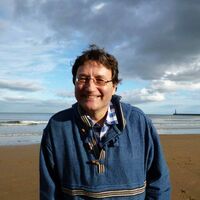
There aren’t many poets that would write a whole book on humorous poetry. You’re reading about a light hearted author who likes to see the funny side of life. In book shops the shelves are full to bursting with serious poetry and although that sort of poetry has its place the funny stuff seems to have taken a back seat. I found that it is the funny poetry that got me interested in the deeper verse. So, read it, give it a try. You won’t like everything you read but I’m willing to bet that some of them will make you laugh. If the poems won’t make you smile maybe the illustrations will. Please don’t read my poetry if you’re returning from a funeral or if you have a headache. These are not the times to try and laugh. Give it a few minutes.
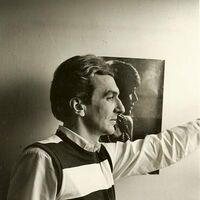
John Joseph Wieners (6 January 1934 – 1 March 2002) was an American lyric poet. Born in Milton, Massachusetts, Wieners attended St. Gregory Elementary School in Dorchester, Massachusetts and Boston College High School. From 1950 to 1954, he studied at Boston College, where he earned his A.B. In 1954 he heard Charles Olson read at the Charles Street Meeting House on Beacon Hill during Hurricane Hazel. He decided to enroll at Black Mountain College where he studied under Olson and Robert Duncan from 1955 to 1956. He then worked as an actor and stage manager at the Poet’s Theater in Cambridge, and began to edit Measure, releasing three issues over the next several years. From 1958 to 1960 Wieners lived in San Francisco, California and actively participated in the San Francisco Poetry Renaissance. The Hotel Wentley Poems was published in 1958, when Wieners was twenty-four. Wieners returned to Boston in 1960 and was committed to a psychiatric hospital. In 1961, he moved to New York City and worked as an assistant bookkeeper at Eighth Street Books from 1962-1963, living on the Lower East Side with Herbert Huncke. He went back to Boston in 1963, employed as a subscriptions editor for Jordan Marsh department stores until 1965. Wieners’ second book, Ace of Pentacles, was published in 1964. In 1965, after traveling with Olson to the Spoleto Festival and the Berkeley Poetry Conference, he enrolled in the Graduate Program at SUNY Buffalo. He worked as a teaching fellow under Olson, then as an endowed Chair of Poetics, staying until 1967, with Pressed Wafer coming out the same year. In 1968, he signed the “Writers and Editors War Tax Protest” pledge, vowing to refuse tax payments in protest against the Vietnam War. In the spring of 1969, Wieners was again institutionalized, and wrote Asylum Poems. Nerves was released in 1970, containing work from 1966 to 1970. In the early 1970s, Wieners became active in education and publishing cooperatives, political action committees, and the gay liberation movement. He also moved into an apartment at 44 Joy Street on Beacon Hill, where he lived for the next thirty years. In 1975, Behind the State Capitol or Cincinnati Pike was published, a magnum opus of “Cinema decoupages; verses, abbreviated prose insights.” For the next ten years, he published rarely and remained largely out of the public eye. In 1985, he was a Guggenheim Fellow. Black Sparrow Press released two collections edited by Raymond Foye: Selected Poems: 1958-1984 and Cultural Affairs in Boston, in 1986 and 1988 respectively. A previously unpublished journal by Wieners came out in 1996, entitled The Journal of John Wieners is to be called 707 Scott Street for Billie Holliday 1959, documenting his life in San Francisco around the time of The Hotel Wentley Poems. At the Guggenheim Museum in 1999, Wieners gave one of his last public readings, celebrating an exhibit by the painter Francesco Clemente. A collaboration between the two, Broken Women, was also published. Wieners died on March 1, 2002 at Massachusetts General Hospital in Boston, having collapsed a few days previously after an evening attending a party with his friend and publisher Charley Shively. Kidnap Notes Next, a collection of poems and journal entries edited by Jim Dunn, was published posthumously in 2002. A Book of Prophecies was published in 2007 from Bootstrap Press. The manuscript was discovered in the Kent State University archive's collection by poet Michael Carr. It was a journal written by Wieners in 1971, and opens with a poem titled 2007. His papers are held at the University of Delaware. References Wikipedia - http://en.wikipedia.org/wiki/John_Wieners
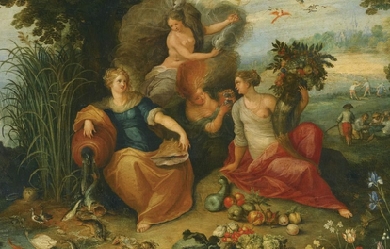
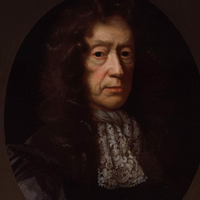
Edmund Waller, FRS (3 March 1606– 21 October 1687) was an English poet and politician who sat in the House of Commons at various times between 1624 and 1679. He was educated at Eton and King’s College, Cambridge. He entered Parliament early and was at first an active member of the opposition. In 1631 he married a London heiress who died in 1634. Later he became a Royalist, and in 1643 was leader in a plot to seize London for Charles I. For this he was imprisoned, fined, and banished. He made his peace with *Cromwell in 1651, returned to England, and was restored to favour at the Restoration. After the death of his first wife he unsuccessfully courted Lady Dorothy Sidney, the 'Sacharissa’ of his poems; he married Mary Bracey as his second wife in 1644. Waller was a precocious poet; he wrote, probably as early as 1625, a complimentary piece on His Majesty’s Escape at St Andere (Prince Charles’s escape from shipwreck at Santander) in heroic couplets, one of the first examples of a form that prevailed in English poetry for some two centuries. His verse, much of it occupied with praise of Sacharissa, Lady Carlisle, and others, is of a polished simplicity; *Dryden repeatedly praised his 'sweetness’, describing him as 'the father of our English numbers’, and linking his name with Denham’s as poets who brought in the *Augustan age. His early poems include 'On a Girdle’ and 'Go, lovely rose’; his later Instructions to a Painter (1666, on the battle of Sole Bay) and 'Of the Last Verses in the Book’, containing the famous lines, 'The Soul’s dark cottage, battered and decayed, I Lets in new light through chinks that time hath made.' His Poems first appeared in 1645, Divine Poems in 1685, and Poems,. As a member of Parliament during the political turmoil of the 1640s, he was arrested for his part in a plot to establish London as a stronghold of the king; by betraying his colleagues and by lavish bribes, he avoided death. He later wrote poetic tributes to both Oliver Cromwell (1655) and Charles II (1660). Rejecting the dense intellectual verse of Metaphysical poetry, he adopted generalizing statement, easy associative development, and urbane social comment. With his emphasis on definitive phrasing through inversion and balance, he prepared the way for the emergence of the heroic couplet. By the end of the 17th century the heroic couplet was the dominant form of English poetry. Waller’s lyrics include the well-known “Go, lovely Rose!”. Early life Edmund Waller was the eldest son of Robert Waller (1560-1616) of Coleshill, Herts, by Anne, daughter of Griffith Hampden, his wife; thus he was first cousin to The Patriot, John Hampden. Robert Waller was son of Edmund Waller (1536-1603, aka Edmund Waller I), son of Robert Waller (1517–53), a scion of the Waller family of Groombridge Place, Kent. (A branch of this family was seated later at Newport Pagnell, Buckingham, from whence they removed in the 17th century to Virginia, where they became prominent in early Virginia affairs. See Benjamin Waller, Littleton Waller Tazewell and Edwin Waller). Waller was baptised in the parish church of Amersham, but early in his childhood his father moved the family from Coleshill to Beaconsfield. Of Waller’s early education all we know is his own account that he “was bred under several ill, dull and ignorant schoolmasters, until he went to Mr Dobson at Wycombe, who was a good schoolmaster and had been an Eton scholar”. Robert Waller died in 1616, and Anne, a lady of rare force of character, sent him to Eton and to the University of Cambridge. He was admitted a fellow-commoner of King’s College, Cambridge on 22 March 1620, he left without a degree, before completing his education at Lincoln’s Inn in 1622. On reaching his majority in 1627 he inherited an estate estimated to be worth up to £3,500 a year. Colonel Adrian Scrope (1601-1660), the Regicide, became his brother-in-law having married his sister Mary in 1624. Early parliamentary career Waller claimed that he entered parliament for Amersham (UK Parliament constituency) in 1621, but this is unlikely as the constituency was not re-enfranchised until May 1624 by which time he was already the sitting Member of Parliament for Ilchester after one of the members chose another seat. In 1626 he was elected MP for Chipping Wycombe. He was elected MP for Amersham in 1628 and sat until 1629 when King Charles decided to rule without parliament for eleven years. Marriage Waller’s first notable action was his surreptitious marriage with a wealthy ward of the Court of Aldermen, in 1631. He was brought before the Star Chamber for this offence, and heavily fined. But his own fortune was large, and all his life Waller was a wealthy man. After bearing him a son and a daughter at Beaconsfield, Mrs Waller died in 1634. It was about this time that the poet was elected into the “Club” of Lucius Cary, 2nd Viscount Falkland. In about 1635 he met Lady Dorothy Sidney, eldest daughter of Robert Sidney, 2nd Earl of Leicester, who was then eighteen years of age. He formed a romantic passion for this girl, whom he celebrated under the name of Sacharissa. She rejected him, and married Henry Spencer, 1st Earl of Sunderland in 1639. Disappointment is said to have made Waller temporarily insane. However, he wrote a long, graceful and eminently sober letter to the bride’s sister on the occasion of the wedding. Speeches In April 1640 Waller was again elected MP for Amersham, in the Short Parliament and made certain speeches which attracted wide attention. He was then elected MP for St Ives in the Long Parliament. Waller had hitherto supported the party of John Pym, but he now left him for the group of Falkland and Hyde. His speeches were much admired, and were separately printed; they are academic exercises very carefully prepared. Clarendon says that Waller spoke “upon all occasions with great sharpness and freedom”. “Waller’s Plot” An extraordinary and obscure conspiracy against Parliament, in favour of the King, which is known as “Waller’s Plot”, occupied the spring of 1643, but on 30 May he and his friends were arrested. In the terror of discovery, Waller confessed “whatever he had said heard, thought or seen, and all that he knew... or suspected of others”, and he certainly cut a poor figure compared to his fellow conspirators were unwilling to betray their principles. Waller was called before the bar of the House in July, and made an abject speech of recantation. His life was spared and he was committed to the Tower of London, but, on paying a fine of £10,000, he was released and banished from the realm in November 1643. His fellow conspirators were less fortunate, Richard Challoner and Waller’s brother in law, Nathaniel Tomkins, were executed on 5 July 1643. Banishment In 1645 the Poems of Waller were first published in London, in three different editions; there has been much discussion of the order and respective authority of these issues, but nothing is decidedly known. Many of the lyrics were already set to music by Henry Lawes. In 1646 Waller travelled with John Evelyn in Switzerland and Italy. During the worst period of his exile Waller managed to “keep a table” for the Royalists in Paris, although in order to do so he was obliged to sell his wife’s jewels. Children His first wife Anne Banks died in childbirth leaving a surviving daughter Elizabeth or Anne (1634-), wife to William Dormer, Dormer the splendid, (died 1683), son of Sir Robert Dormer, Kt. (d.1649), of Ascot Park, Ascott, Stadhampton, Oxfordshire. He married secondly in 1644 Mary Bracey (d.1677), (or Bressy, Bresse or Breaux), of Thame or possibly of somewhere in France, and went over to Calais, afterwards taking up his residence at Rouen. By Mary Breux he had several children. His descendant Rachel Waller, daughter of Edmund Waller VI or VII, considering the Breux family’s connections with Barbadoes wrote in 1939 that: this probably gave rise to the assumption that she was not of pure European blood. In support of this theory, we may compare the portrait of the poet with those of his descendants. In these latter, the long face and aquiline lineaments of the poet have given way to round blunt features and curly black hair. The children included: Benjamin, somewhat lacking in his father’s wit, he was sent to Jersey, a colony in the West Indies; Edmund II or III (1652-dsp Bristol1699/1700), MP for Amersham 1689-98, educ. Christ Church, Oxford, Middle Temple bencher 1696. Became a Quaker. Married (1686) Abigail (d. 1689), daughter of Francis Tylney of Rotherwick, Hants, sister of Frederick Tylney (?1653-1725), MP; William, a merchant of London; Dr. Stephen Waller (1654-1706), of Hall Barn, a doctor of law, a famous civilian, and Commissioner for the Union. His widow, Judith, daughter of Sir Thomas Vernon, MP, Kt., of Farnham, married, as his second wife, John Aislabie, MP, DL (1670-1742). Harry Waller (1701-dsp1772), MP for Chipping Wycombe 1726-47. Deputy master of St. Katherine’s Hospital 1747-1772. Married (1744) Elizabeth, daughter of Sir John Stapylton, 3rd Baronet, M.P.; Edmund Waller III or IV, (1699-1771), MP for Great Marlow 1722-1741, and Chipping Wycombe 1741-1754, Cofferer of the Household December 1744- December 1746. Married before 1720, his step-sister, Mary, daughter of John Aislabie, of Studley Royal, Ripon. Succeeded his uncle Edmund Waller, c. 1700, and bought Gloucestershire estates c.1720s (Farmington, Turkdean & Hazleton, and parts of Bourton-on-the-Water, and Clapton), and his father in 1707. A step-brother of William Aislabie, MP; Edmund Waller IV or V (?1725-88), 'took to the bottle’, MP for Chipping Wycombe 1747-1754 and late 1757-1761. Master, St. Katherine’s Hospital 1747-88, educated St. Mary Hall, Oxford, and Lincoln’s Inn. Married (1755) Martha (d. 8.8.1788), daughter of Rowland Philipps of Orlandon, Pembroke; Anne, married (1738), Sir Miles Stapylton, 4th Bart., MP for Yorkshire, 1734-1750, of Myton, (d.1752), their daughter Anne, d.s.p. Rev. Harry Waller (1760-1824), succeeded his brother Edmund in 1810, retired to Boulogne in 1821 (to avoid debt). Married (15.5.1797) Mary/Maria, sister of Rev. John Dolphin (c1775-11.3.1831), curate at Farmington, c1799; Harry Edmund Waller, JP, DL (13.4.1804-69), sold Hall Barn 1832, inherited Kirkby Fleetham, North Yorkshire and Clint, south of Ripon, from his second-cousin-once-removed Miss Sophia Elizabeth Lawrence (1761–1845) of Studley Royal, in 1845 (she left the bulk of these Aislabie derived estates to her third cousins, the Robinson family). This Waller is said to have won the Ascot Gold Cup of 1852. Married (15.6.1826) Caroline-Elizabeth (d. 1.12.1840) daughter of John Larking, of Clare Hall, Lewisham, Kent. He was nominated High Sheriff of Gloucestershire, November 1833; Edmund Waller VI or VII (1828-98), JP, DL, High Sheriff Gloucestershire 1876, once of Little Hall Barn, and of Farmington, near Northleach and Kirby Fleetham (the unentailed later sold 1889). Married (1858) Lucy (died 1878), daughter of Henry Elwes of Colesbourne, a grandfather of Henry John Elwes. Rachel Waller (1868-1954), only child, married (1889) Cecil Fane De Salis (1857-1948) of Dawley Court, Middlesex; Major-General William-Noel Waller, Royal Artillery, (25.12.1831-1909). Married Mary Elizabeth Heygate, and secondly Charlotte Lycester Templer. Harry Noel Waller, (India, 19.8.1859-17.1.1944, 306 West End Avenue, New York, aged 84). Robert Waller (c1732-dsp1814), MP for Chipping Wycombe 1761-90, educated Oriel College, Oxford, Groom of the bedchamber 1784-1801; Margaret, the eldest, born Rouen; Mary who married Dr. Peter Birch, Doctor of Divinity, Prebendary and Sub Dean of Westminster Abbey. Died 2 July 1710 aged 65 years; Dorothy, a dwarf, sent to the North; Dorothy lived in Morley, near Leeds. She died in 1771 and left her house to the Reverend Timothy Alred, of St Mary’s In The Wood. She had a romantic attachment to him. She is buried in the churchyard there. She is reputed to have been carried from her home on Banks Hill to St Mary’s in a sedan chair. Her former home is said to be the oldest house in Morley, and has a plaque above the door indicating her residency and her date of passing. Eliza, with her brother Edmund, an executor of her father. Return to England At the close of 1651 the Rump Parliament revoked Waller’s sentence of banishment, and he was allowed to return to Beaconsfield, where he lived very quietly until the Restoration. In 1655 he published A Panegyric to my Lord Protector, and was made a Commissioner for Trade a month or two later. He followed this, in 1660, with a poem To the King, upon his Majesty’s Happy Return. Being challenged by Charles II to explain why this latter piece was inferior to the eulogy of Cromwell, the poet smartly replied, “Sir, we poets never succeed so well in writing truth as in fiction”. Waller entered the House of Commons again in 1661, as MP for Hastings, and Burnet has recorded that for the next quarter of a century “it was no House if Waller was not there”. His sympathies were tolerant and kindly, and he constantly defended the Nonconformists. One famous speech of Waller’s was: “Let us look to our Government, fleet and trade, ’tis the best advice the oldest Parliament man among you can give you, and so God bless you”. Later life After the death of his second wife, in 1677, Waller retired to Hall Barn, the house he had designed and owned in Beaconsfield, and though he returned to London, he became more and more attached to the retirement of his woods, “where,” he said, “he found the trees as bare and withered as himself.” In 1661 he had published his poem, St James’ Park; in 1664 he had collected his poetical works; in 1666 appeared his Instructions to a Painter; and in 1685 his Divine Poems. The final collection of his works is dated 1686, but there were further posthumous additions made in 1690. Waller bought a cottage at Coleshill, where he was born, meaning to die there; “a stag,” he said, “when he is hunted, and near spent, always returns home.” He actually died, however, at Hall Barn, with his children and his grandchildren about him, on 21 October 1687, and was buried in woollen (in spite of his expressed wish), in a grade II* listed tomb in the churchyard of St Mary and All Saints Church, Beaconsfield. Verse In the opinion of Edmund Gosse, who wrote Waller’s biography in the Encyclopaedia Britannica Eleventh Edition (1911), Waller’s lyrics were at one time admired to excess, but with the exception of “Song” (Go, lovely Rose) and one or two others, they have lost their popularity. He lacked imaginative invention, but resolutely placed himself in the forefront of reaction against the violence and “conceit” into which the baser kind of English poetry was descending. Waller was regarded by some as the pioneer in introducing the classical couplet into English verse. It is, of course, obvious that Waller could not “introduce” what had been invented, and admirably exemplified, by Geoffrey Chaucer. But those who have pointed to smooth distichs employed by poets earlier than Waller have not given sufficient attention to the fact (exaggerated, doubtless, by critics arguing in the opposite camp) that it was he who earliest made writing in the serried couplet the habit and the fashion. Waller was writing in the regular heroic measure, (the classical school of poetry) afterwards carried to so high a perfection by John Dryden and Alexander Pope as early as 1623 (if not, as has been supposed even in 1621). Waller, along with his contemporary John Denham (poet), in their poetical legacy achieved the label of “Sons of British Poetry”. Waller is briefly mentioned in Harold Bloom’s landmark book on literary criticism The Anxiety of Influence. In it, Bloom refers to Hume’s judgement of Waller being “saved only because Horace was so distant,” as an underestimation because “Waller is dead. Horace is alive.” Works * George Giffillan, (ed, 1857), Poetical Works of Edmund Waller & Sir John Denham. * G. Thorn-Drury (ed, 1893) Poetical Works A critical edition with a careful biography. Memorials * Edmund Waller Primary School is in New Cross, South East London. References Wikipedia—https://en.wikipedia.org/wiki/Edmund_Waller

Richard Withey currently resides in a mental asylum; incarcerated by his mind he occasionally makes up stories and peculiar tales of characters that have escaped into his thought processes and become part of his written words. Occasionally he will write the odd poem that helps his angst with the dissatisfaction and injustices of the world, sometimes the poems can be quite 'loved up' as well displaying a lovely ying-yang approach to the typical mental illness that is usually rage and/or then catatonia that seems to be the norm for loonies these days. He has also delved into the world of singer/songwriter, this generally occurs in the wee, small hours and involves copious amounts of alcohol, these songs can be found on SoundCloud under Grim Peepers (and he apologises in advance if any slurring can be heard). He would like to thank you in advance for taking time to read his fictional adventures, ramblings and adventures and hopes he can at least bring a smile, tear, grimace or joy to your person for a small (or longing) time. Thanks for reading, and constructive comments and compliments are very welcome ;) x
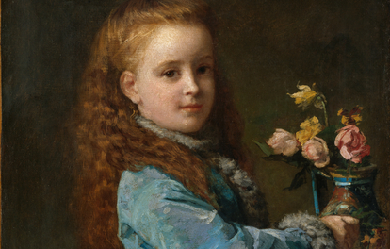
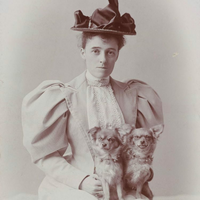
Edith Wharton (born Edith Newbold Jones; January 24, 1862– August 11, 1937) was a Pulitzer Prize-winning American novelist, short story writer, and designer. She was nominated for the Nobel Prize in Literature in 1927, 1928 and 1930. Wharton combined her insider’s view of America’s privileged classes with a brilliant, natural wit to write humorous, incisive novels and short stories of social and psychological insight. She was well acquainted with many of her era’s other literary and public figures, including Theodore Roosevelt.
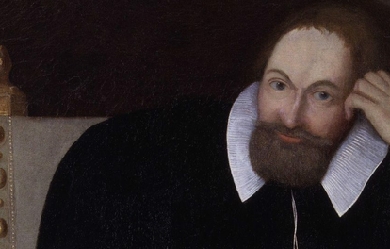
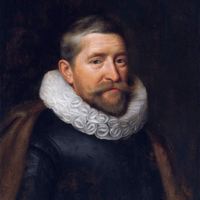
Sir Henry Wotton (/ˈwʊtən/; 30 March 1568– December 1639) was an English author, diplomat and politician who sat in the House of Commons in 1614 and 1625. He is often quoted as saying, “An ambassador is an honest gentleman sent to lie abroad for the good of his country.” (Wotton said that when on a mission in Augsburg, in 1604.) Life The son of Thomas Wotton (1521–1587) and his second wife, Elionora Finch, Henry was the youngest brother of Edward Wotton, 1st Baron Wotton, and grandnephew of the diplomat Nicholas Wotton. Henry was born at Bocton Hall in the parish of Bocton or Boughton Malherbe, Kent. He was educated at Winchester College and at New College, Oxford, where he matriculated on 5 June 1584, alongside John Hoskins. Two years later he moved to Queen’s College, graduating in 1588. At Oxford he was the friend of Albericus Gentilis, then professor of Civil Law, and of John Donne. During his residence at Queen’s he wrote a play, Tancredo, which has not survived, but his chief interests appear to have been scientific. In qualifying for his M.A. degree he read three lectures De oculo, and to the end of his life he continued to interest himself in physical experiments His father, Thomas Wotton, died in 1587, leaving Henry only a hundred marks a year. About 1589 Wotton went abroad, with a view probably to preparation for a diplomatic career, and his travels appear to have lasted for about six years. At Altdorf he met Edward, Lord Zouch, to whom he later addressed a series of letters (1590–1593) which contain much political and other news, and provide a record of the journey. He travelled by way of Vienna and Venice to Rome, and in 1593 spent some time at Geneva in the house of Isaac Casaubon, to whom he contracted a considerable debt. He returned to England in 1594, and in the next year was admitted to the Middle Temple. While abroad he had from time to time provided Robert Devereux, 2nd Earl of Essex, with information, and he now definitely entered his service as one of his agents or secretaries. It was his duty to supply intelligence of affairs in Transylvania, Poland, Italy and Germany. He served as Essex’s secretary in Ireland from 15 April 1599 until 4 September 1599. Wotton was not, like his unfortunate fellow-secretary, Henry Cuffe, who was hanged at Tyburn in 1601, directly involved in Essex’s downfall, but he thought it prudent to leave England, and within sixteen hours of his patron’s apprehension he was safe in France, whence he travelled to Venice and Rome. In 1602 he was living at Florence, and a plot to murder James VI of Scotland having come to the ears of the grand-duke of Tuscany, Wotton was entrusted with letters to warn the king of the danger, and with Italian antidotes against poison. As “Ottavio Baldi” he travelled to Scotland by way of Norway. He was well received by James, and remained three months at the Scottish court, retaining his Italian incognito. He then returned to Florence, but on receiving the news of James’s accession hurried to England. James knighted him, and offered him the embassy at Madrid or Paris; but Wotton, knowing that both these offices involved ruinous expense, desired rather to represent James at Venice. He left London in 1604 accompanied by Sir Albertus Morton, his half-nephew, as secretary, and William Bedell, the author of an Irish translation of the Bible, as chaplain. Wotton spent most of the next twenty years, with two breaks (1612–16 and 1619–21), at Venice. He helped the Doge in his resistance to ecclesiastical aggression, and was closely associated with Paolo Sarpi, whose history of the Council of Trent was sent to King James as fast as it was written. Wotton had offended the scholar Caspar Schoppe, who had been a fellow student at Altdorf. In 1611 Schoppe wrote a scurrilous book against James entitled Ecclesiasticus, in which he fastened on Wotton a saying which he had incautiously written in a friend’s album years before. It was the famous definition of an ambassador as an “honest man sent to lie abroad for the good of his country” (Legatus est vir bonus peregre missus ad mentiendum rei publicae causa). It should be noticed that the original Latin form of the epigram did not admit of the double meaning. This was adduced as an example of the morals of James and his servants, and brought Wotton into temporary disgrace. Wotton was at the time on leave in England, and made two formal defences of himself, one a personal attack on his accuser addressed to Marcus Welser of Strassburg, and the other privately to the king. He obtained no diplomatic employment for some time, but seems to have finally won back the royal favour by his parliamentary support in for James’s claim to impose arbitrary taxes on merchandise. In 1614 he was elected Member of Parliament for Appleby in the Addled Parliament. He was sent to the Hague and in 1616 he returned to Venice. In 1620 he was sent on a special embassy to Ferdinand II at Vienna, to do what he could on behalf of James’s daughter Elizabeth of Bohemia. Wotton’s devotion to this princess, expressed in his exquisite verses beginning “You meaner beauties of the night,” was sincere and unchanging. At his departure the emperor presented him with a valuable jewel, which Wotton received with due respect, but before leaving the city he gave it to his hostess, because, he said, he would accept no gifts from the enemy of the Bohemian queen. After a third term of service in Venice he returned to London early in 1624 and in July he was installed as provost of Eton College. This office did not resolve his financial problems, and he was on one occasion arrested for debt. In 1625 he was elected MP for Sandwich. In 1627 he received a pension of £200, and in 1630 this was raised to £500 on the understanding that he should write a history of England. He did not neglect the duties of his provostship, and was happy in being able to entertain his friends lavishly. His most constant associates were Izaak Walton and John Hales. A bend in the Thames below the Playing Fields, known as “Black Potts,” is still pointed out as the spot where Wotton and Walton fished in company. He died at the beginning of December 1639 and was buried in the chapel of Eton College. Works * Of 25 poems printed in Reliquiae Wottonianae 15 are Wotton’s. Of those, two are well known, O his Mistris, the Queen of Bohemia," and The Character of a Happy Life.” * During his lifetime he published two works: The Elements of Architecture (1624), which is a free translation of de Architectura by Marcus Vitruvius Pollio, executed during his time in Venice; and a Latin prose address to the king on his return from Scotland (1633). Wotton shares authorship of the quote “Well building hath three conditions: firmness, commodity, and delight,” with Vitruvius, from whose de Architectura Wotton translated the phrase; some have termed his Elements a paraphrase rather than a true translation, and the quote is often attributed to Vitruvius. * In 1651 appeared the Reliquiae Wottonianiae, with Izaak Walton’s Life. References Wikipedia—https://en.wikipedia.org/wiki/Henry_Wotton


